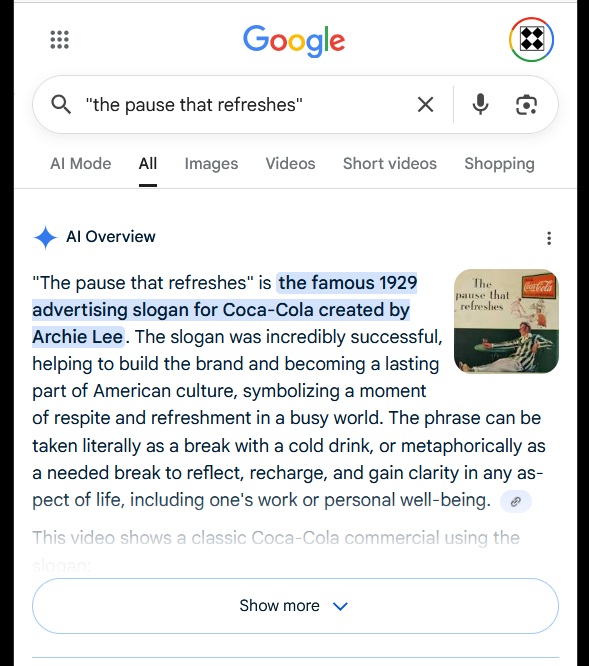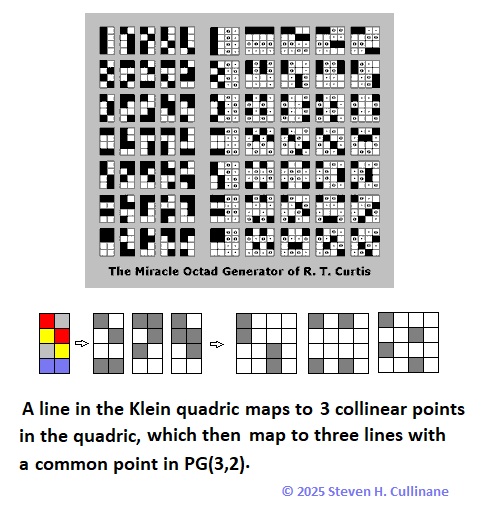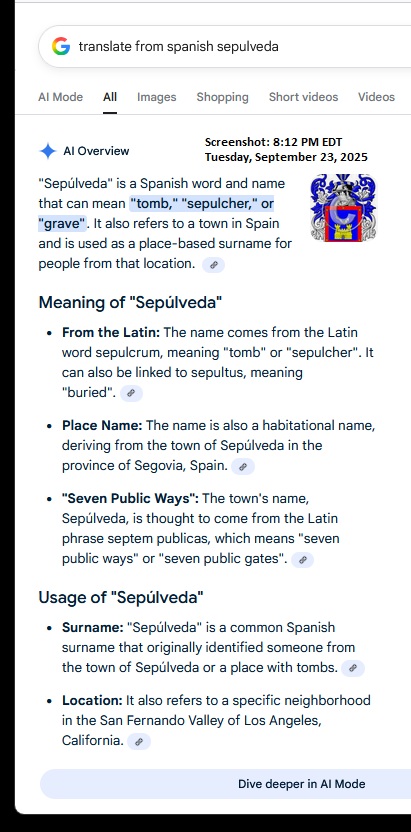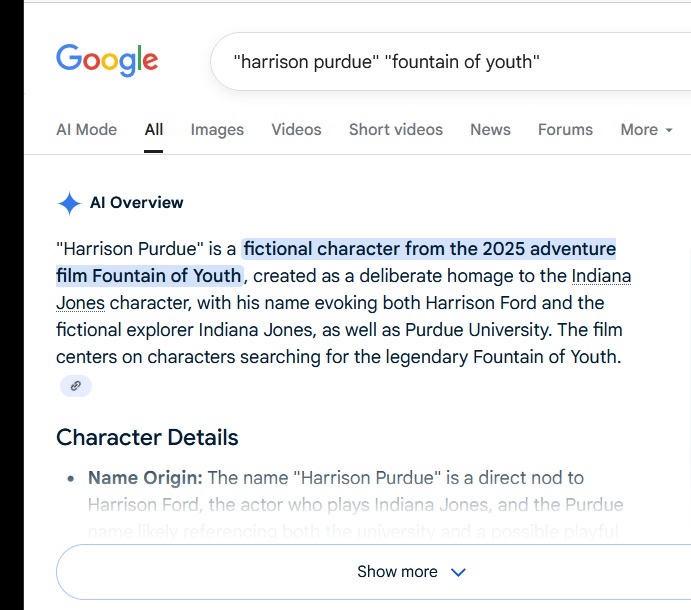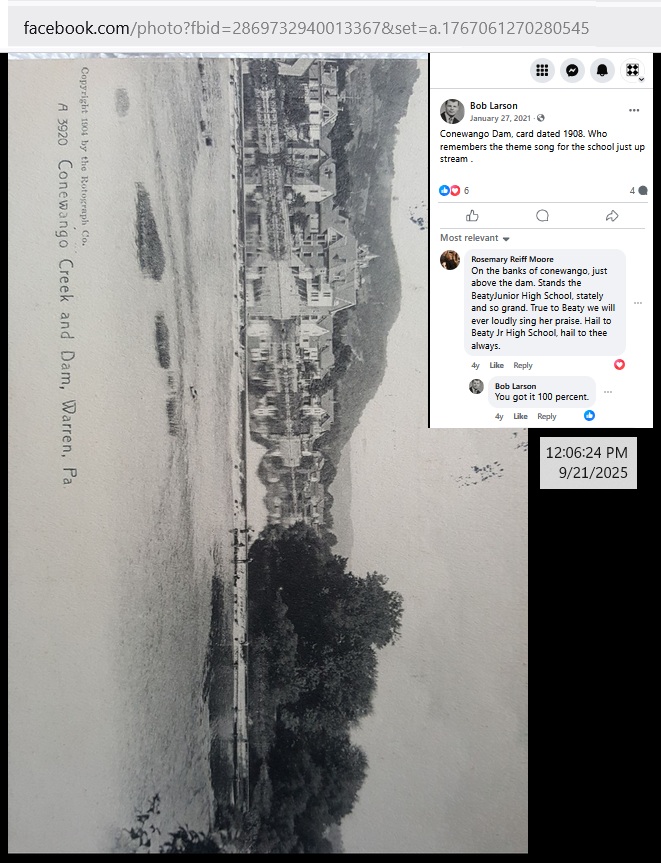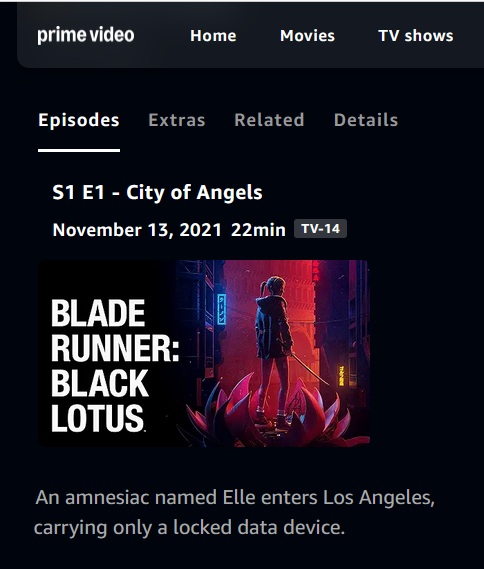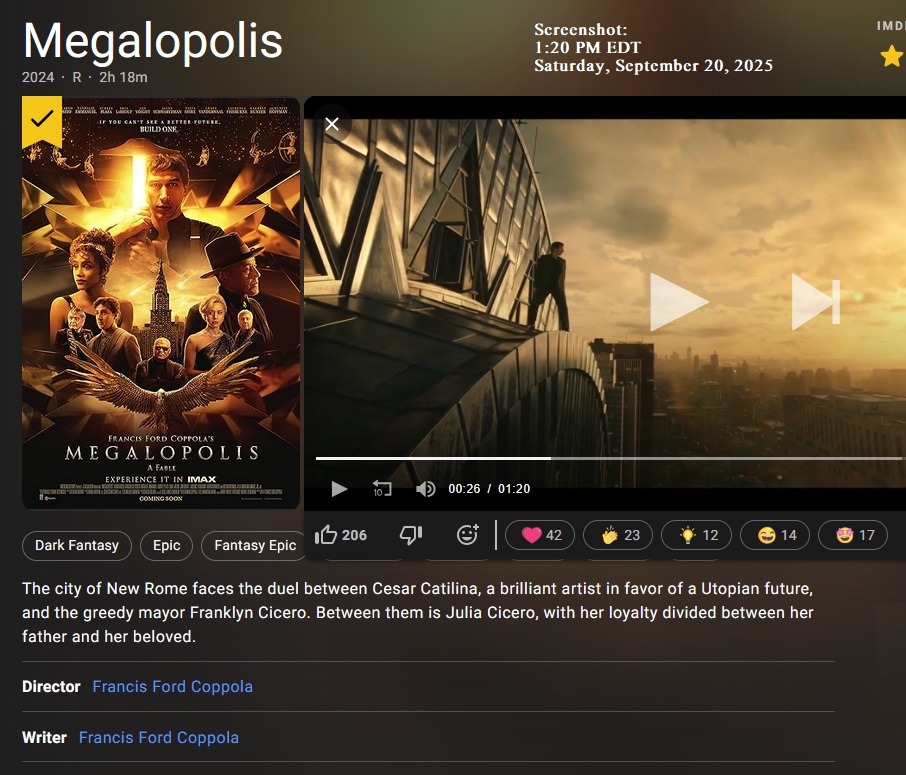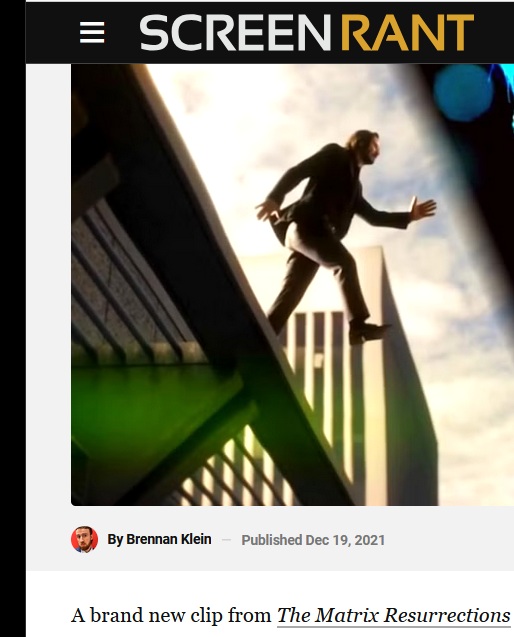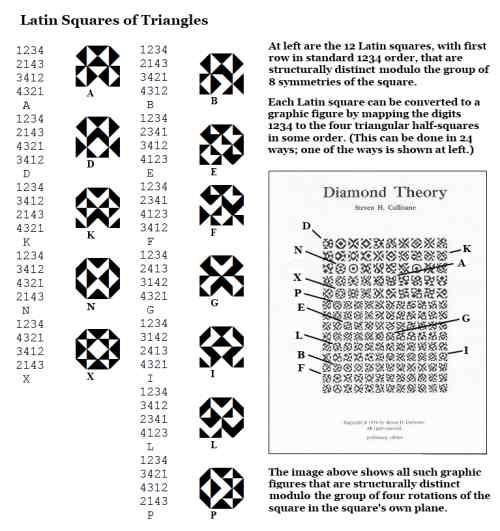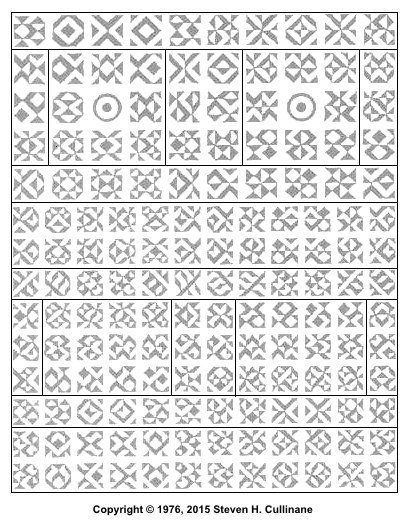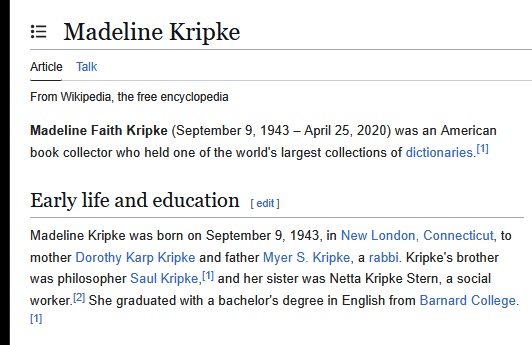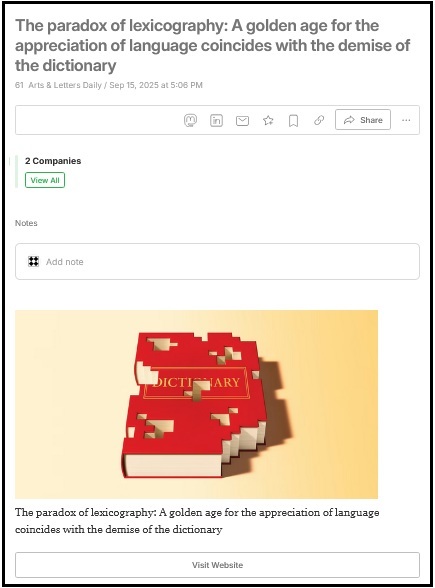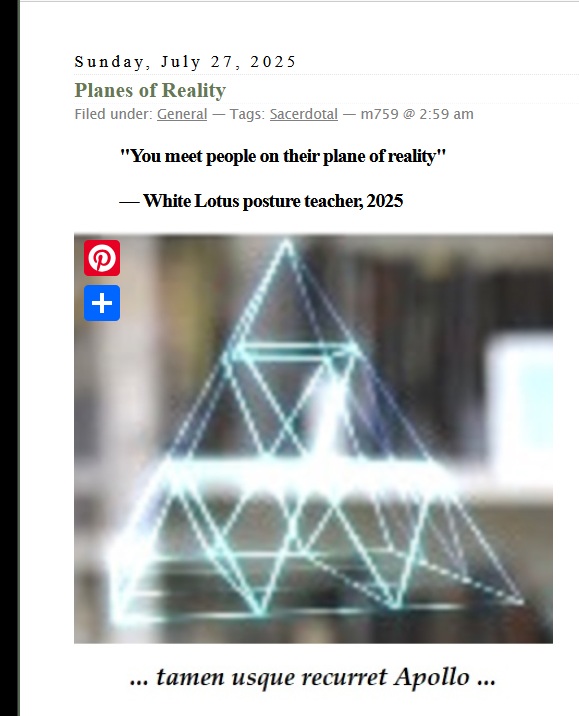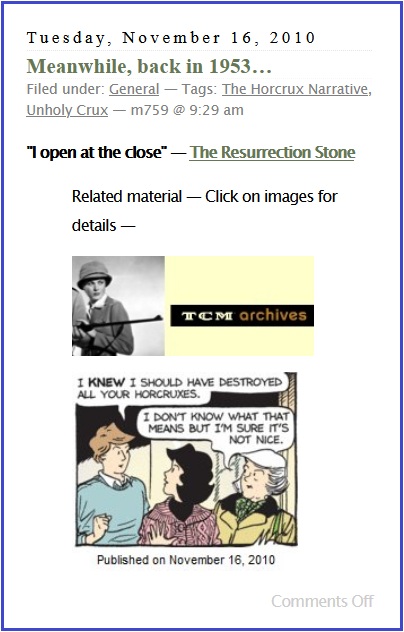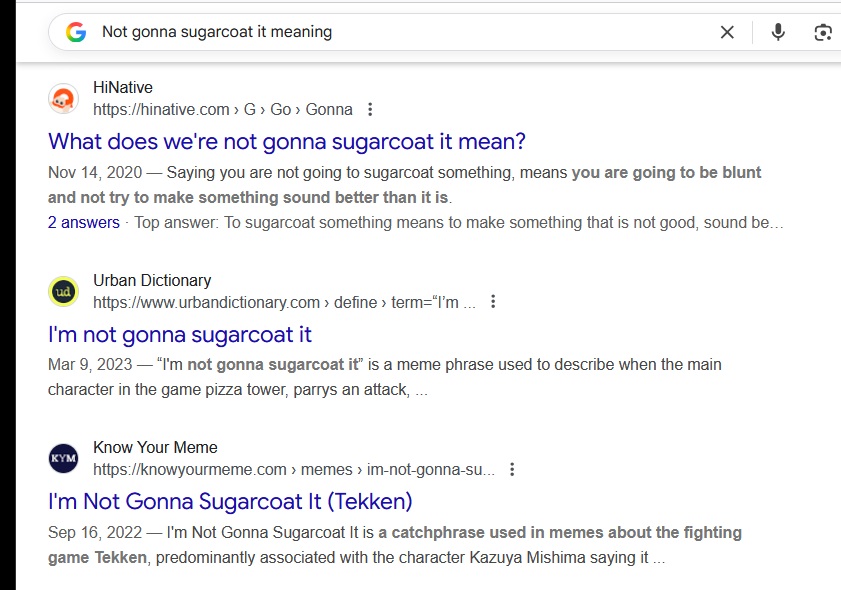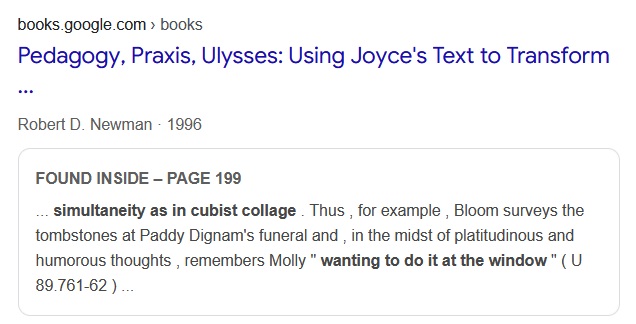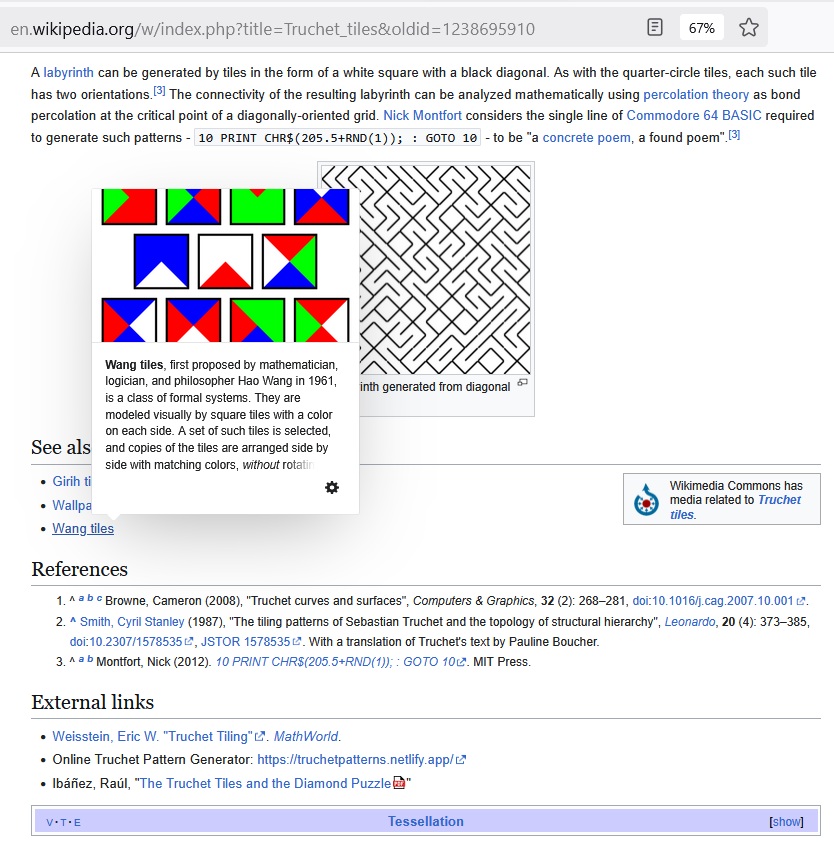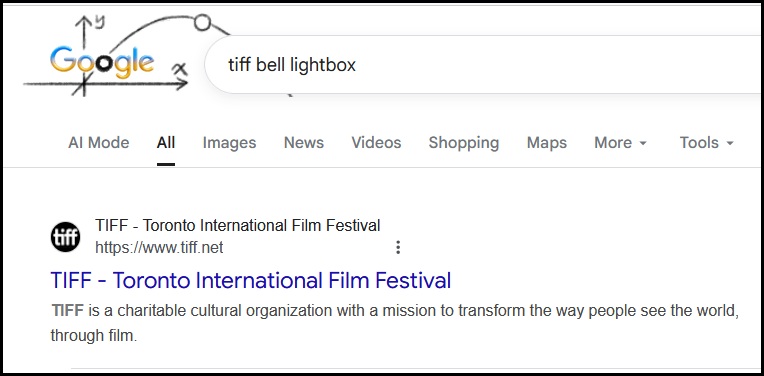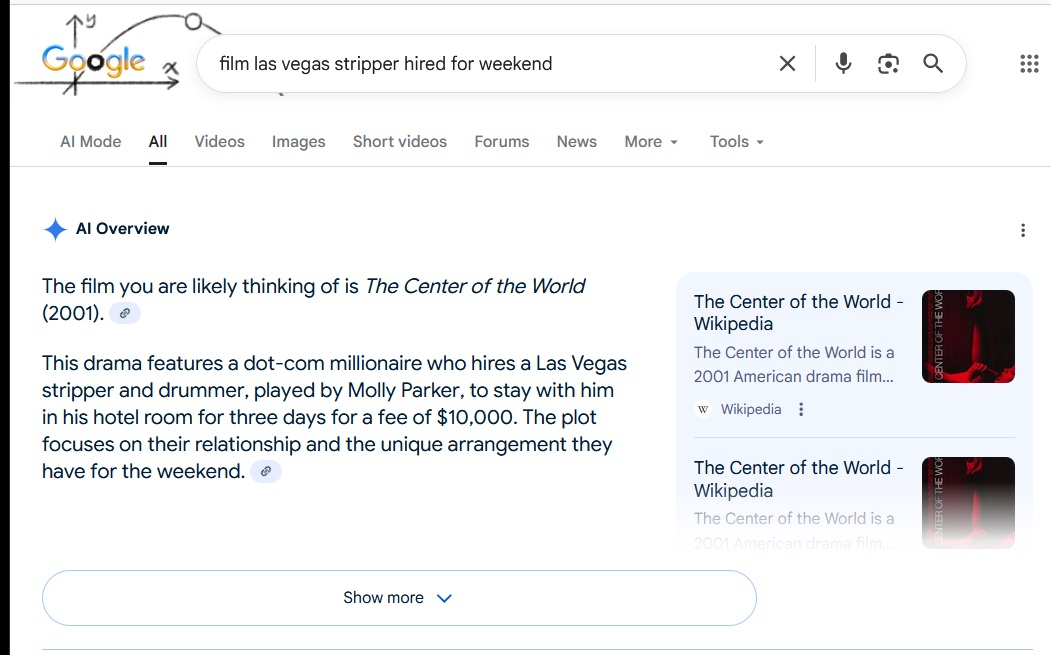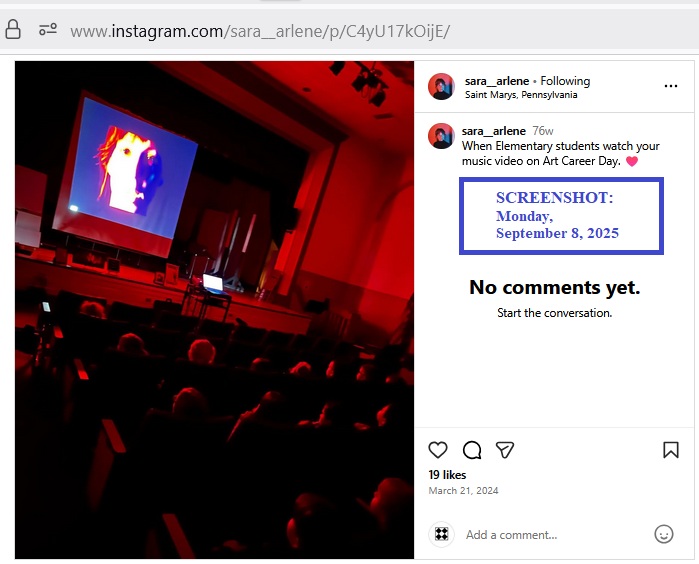Monday, October 6, 2025
(Distinctness as labelings requires verification.)

Update of 1:35 PM EDT Oct. 7
The above incidence matrices are clearly distinct as matrices, but
whether they show the well-known 30 labelings that are structurally
distinct as labelings is not clear. There seems to be little discussion
of Fano-plane incidence matrices on the Web. One example of such
a matrix with a well-formed structure of cyclically shifted rows —
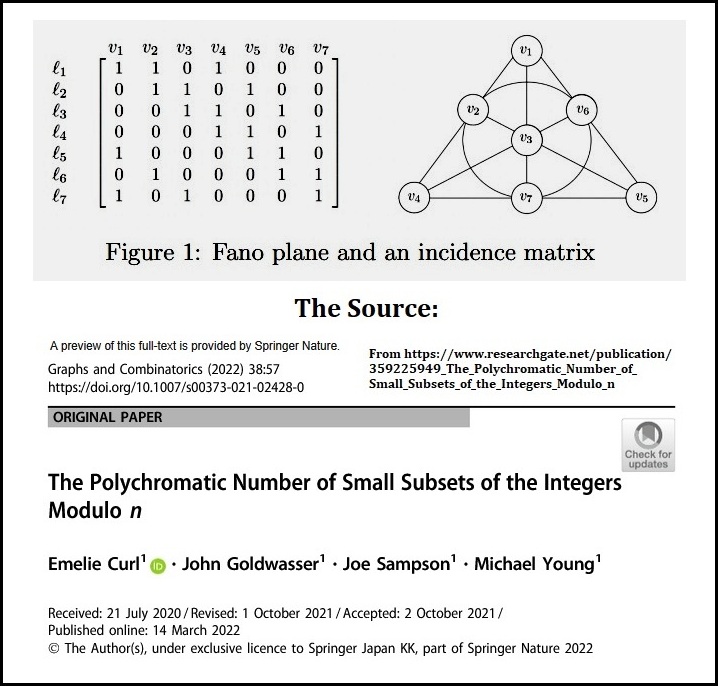
Comments Off on Vibe-coded Illustration of
30 Fano-Plane Labelings
Bradbury … Aiken.
Related reading for fans of Bradbury's phrase
"patterning windows" and/or Aiken's phrase
"shadow guests" —
The Strong Law of Small Shapes (May 29, 2024).
Comments Off on The October Country:
“Bradbury, Aiken … Aiken, Bradbury”
Sunday, October 5, 2025
The Hieronymus Bosch reference in a post yesterday morning
was suggested in part by the surrealistic drama "Changing Stations"
by one Victor Snaith. Snaith reportedly died at 77 on July 3, 2021.
He was a British professor of mathematics. Vide his obituary.
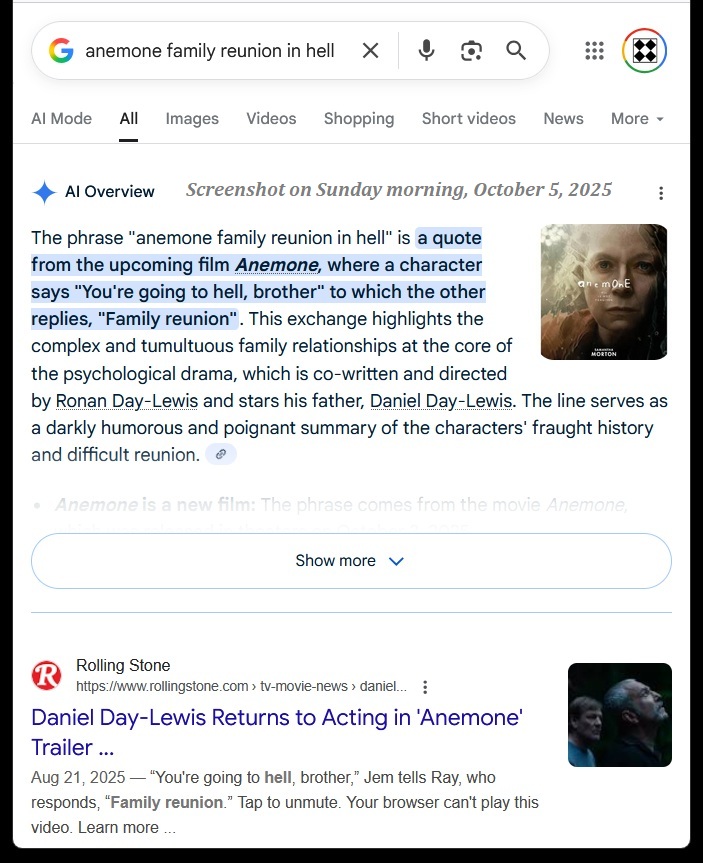
See also this journal on Snaith's reported death date, in other posts
tagged The Holy Field.
Some backstory: Snaith in Log24 posts tagged smallfield.
Comments Off on Math Hell
A mathematician, like a painter or a poet, is a maker of patterns.
If his patterns are more permanent than theirs, it is because
they are made with ideas.
— G. H. Hardy, A Mathematician's Apology (1940).
This post notes three uses of overlapping figures in mathematics.
The idea in each case is that of overlapping.
An old use of overlapping — probably well-known in ancient Greece:

A more recent use of overlapping — Venn diagrams:

My own personal use of overlapping —
half-circle patterns that led to the diamond theorem:
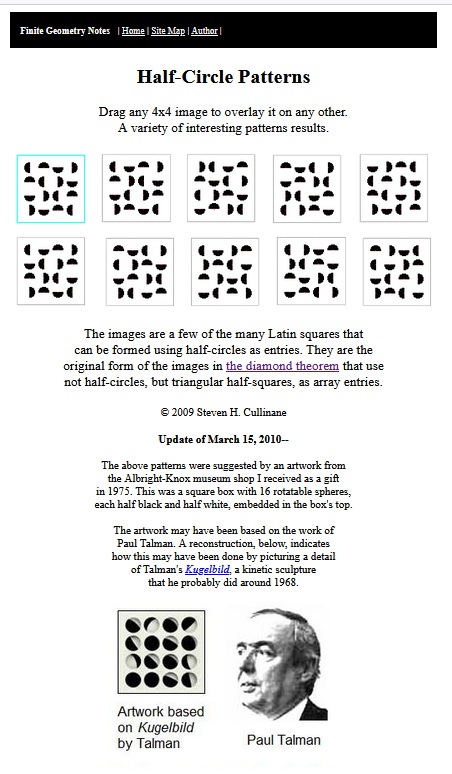
Comments Off on Overlapping
Saturday, October 4, 2025
"Hieronymus, Harry … Harry, Hieronymus."

"Another opening, another show."

Comments Off on Rube Icon … Continues.
… who reportedly died at 91 on September 24, 2025 . . . .
A synchronology check yields Zadie Smith.
Scholium for St. Bonaventure —

Comments Off on In Memory of Ashleigh Brilliant . . .
A Log24 search —
http://m759.net/wordpress/?s=Bonaventure —
yields . . .
St. Bonaventure on the
Trinity at math16.com
and
A trinity:

Click on picture for further details.
Comments Off on For the Feast of St. Francis:
Geometric Theology
Friday, October 3, 2025
Or… "Mathematics for Language Animals: A Unifying Framework"
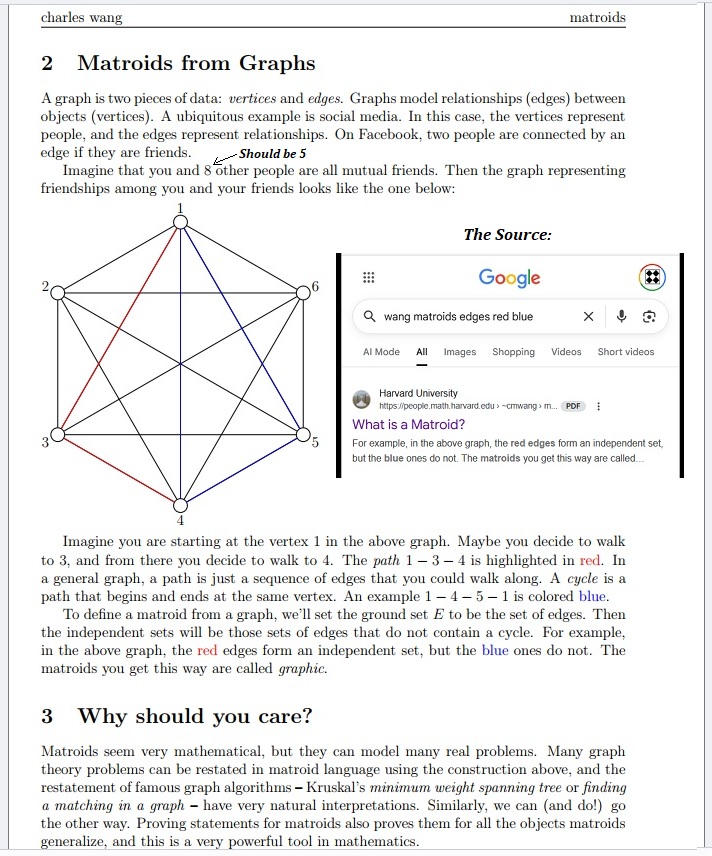
Comments Off on Political Anatomy: Arteries Red, Veins Blue
|
Finite Geometry: A Unifying Framework
for Art and Mathematics
"In essence, finite geometry, exemplified by the Cullinane diamond theorem, acts as a 'portal' that unveils profound mathematical structures underlying seemingly simple patterns, demonstrating the interconnectedness of geometry, algebra, combinatorics, and visual art, with significant implications for fields ranging from error-correcting codes to experimental design and signal processing."
— NotebookLM AI on 18 September 2025
|

See as well a dies natalis on 18 September 2025 —

Comments Off on A Unifying Framework
Note on the previous post — Wikipedia:
"Abramson was scheduled to address
the commencement exercises of Barnard College
on May 14, 2012. Her speech was canceled after
President Barack Obama requested to speak instead.[19]
19. Parness, Amie (March 3, 2012).
'Obama asks to deliver commencement speech
at New York women's college'. The Hill.
Retrieved May 21, 2017."
And then there is this journal on May 14, 2012.
Comments Off on Turning Point
Thursday, October 2, 2025
A production of Oliver! that opened tonight in my hometown
suggests a look at Oliver Stone.
Stone's work in turn suggests a look at the 2011 dies natalis of
Eric 'Dr. Rock' Isralow, music historian .
"Eric "Dr. Rock" Isralow, one of the world's first rock historians
and a longtime Bay Area radio personality, died June 2 at
St. Francis Memorial Hospital in San Francisco. He was 67."
Synchronology check:

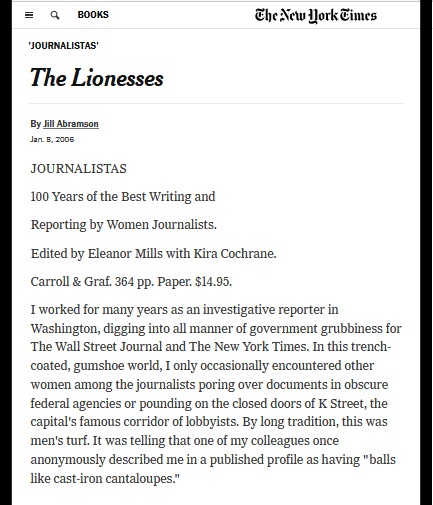
Comments Off on Oliver! (Stone)
Comments Off on Color Monolith
Wednesday, October 1, 2025
Posts now tagged Incipient Colorings.
Some related mathematics:
Cameron Quartets and 105 Partitions.
Comments Off on For Wallace Stevens’s Birthday — October 2.
Related material suggested by news from later today . . .
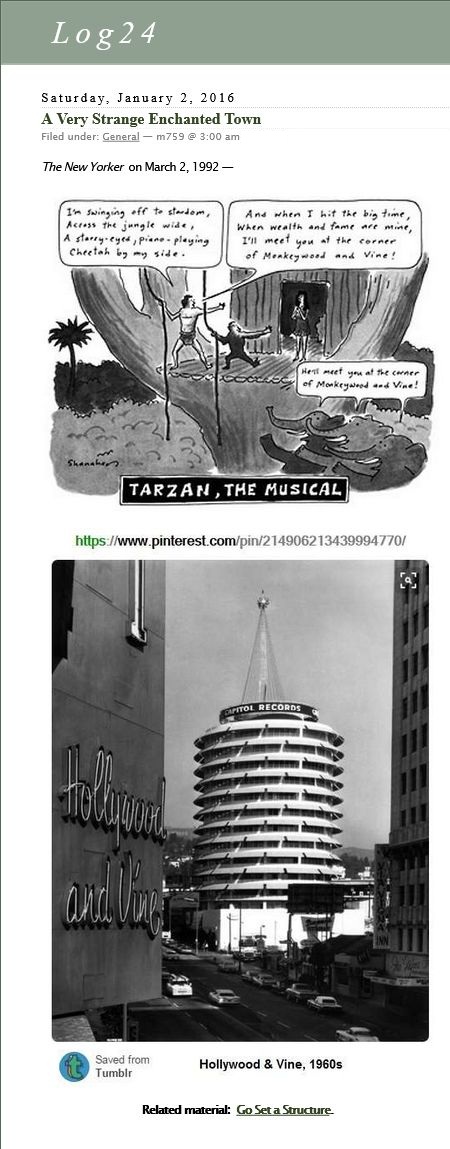
The above-mentioned news . . .

Comments Off on “A Very Strange Enchanted Town” … Continues
Comments Off on The Black Van
Tuesday, September 30, 2025

"Holding onto the last of the summer fruit
on the last day of September…" — Lilyjcollins
Comments Off on For Gideon Summerfield
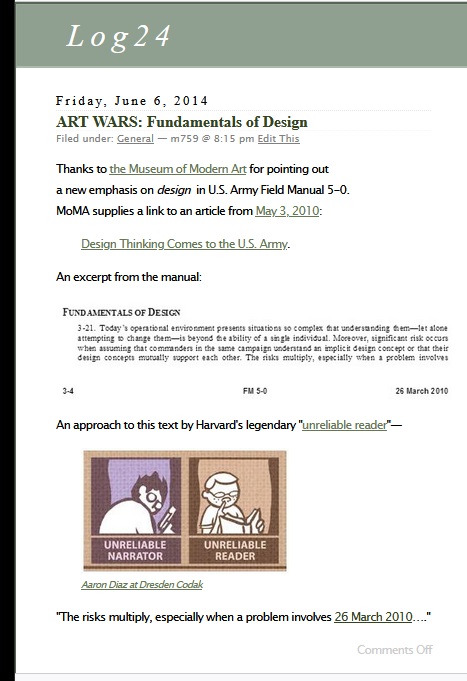
This post was suggested by the arXiv date of a paper by
Peter J. Cameron on "asymmetric Latin squares" —
8 July 2015 — and by that date in this journal.
Comments Off on Design Concepts
"October the First is Too Late" — Fred Hoyle title

Comments Off on Domain Mastery
Monday, September 29, 2025
Comments Off on Elegy for an Adman
(Neil Kraft, with a nod to Roger Thornhill)
A place-name in today's news suggests . . .
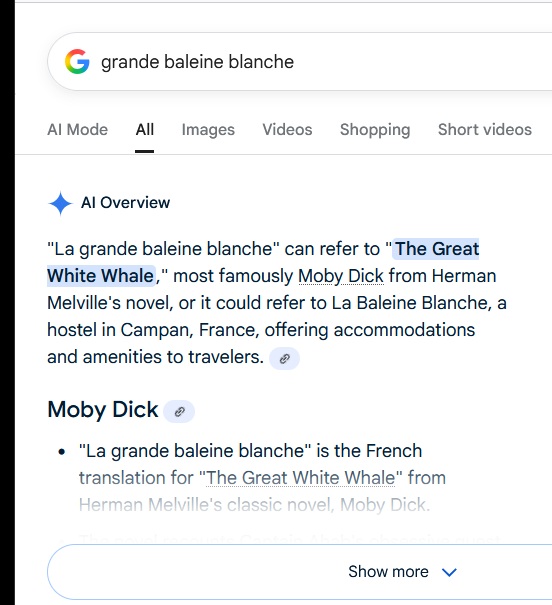
Comments Off on Nomenclature

250928-Honey_Don't-driving-scene-at-about-0.24.52-
with-1.04.34-remaining-paused-at-about-6.30-AM-EDT
-250928.jpg
* Vide August 19, 2023.
Update, 10:15 AM Sept. 29 —
Another sort of Commedia mythspace:
today's update to the previous post.
Comments Off on Working Blue* Continues: The Long Filename
Sunday, September 28, 2025
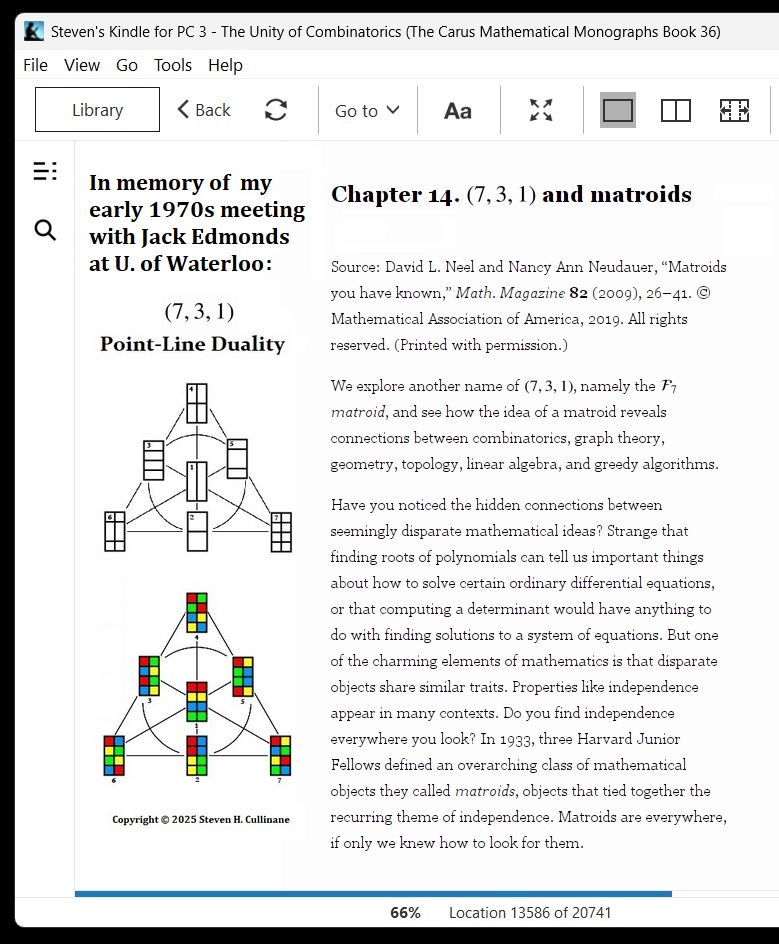
Update on Monday morning, Sept. 29, 2025 —
Related reading . . . Jack Edmonds in Wikipedia and . . .
Edmonds, Jack (1991), "A Glimpse of Heaven,"
in J.K. Lenstra; A.H.G. Rinnooy Kan; A. Schrijver (eds.),
History of Mathematical Programming – A Collection of
Personal Reminiscences, CWI, Amsterdam and North-Holland,
Amsterdam, pp. 32–54
Comments Off on Fundamental Structure: “(7, 3, 1)”
The reported June 21, 2016, dies natalis of Ron Shaw
suggests a flashback . . .
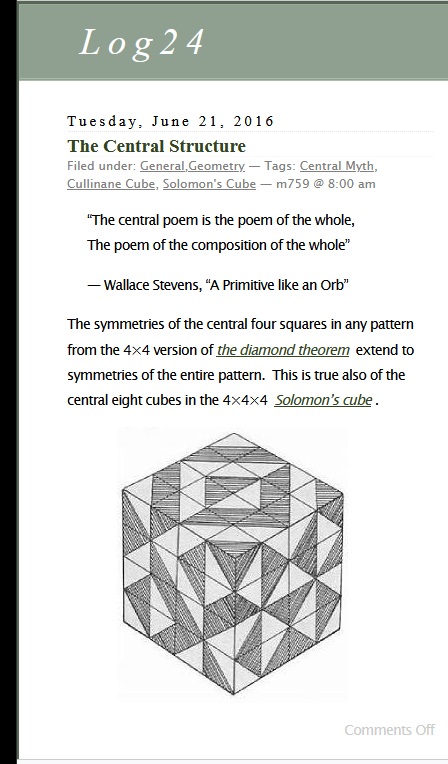
Comments Off on Structure
http://m759.net/wordpress/?s="Ron+Shaw" —

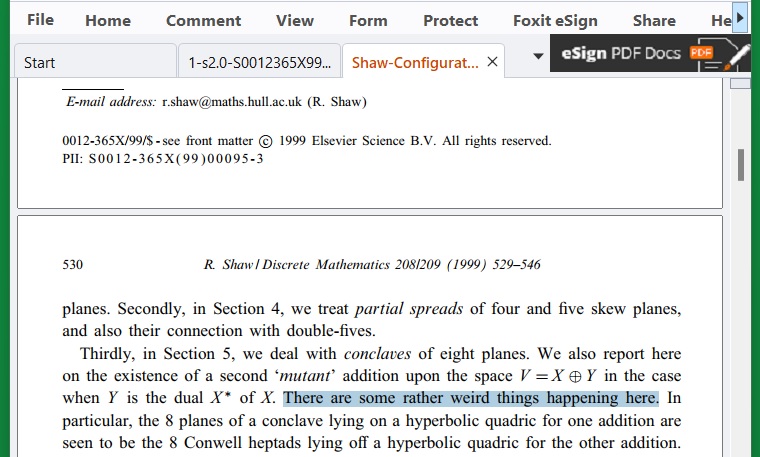
The Klein quadric as background for
the Miracle Octad Generator of R. T. Curtis —

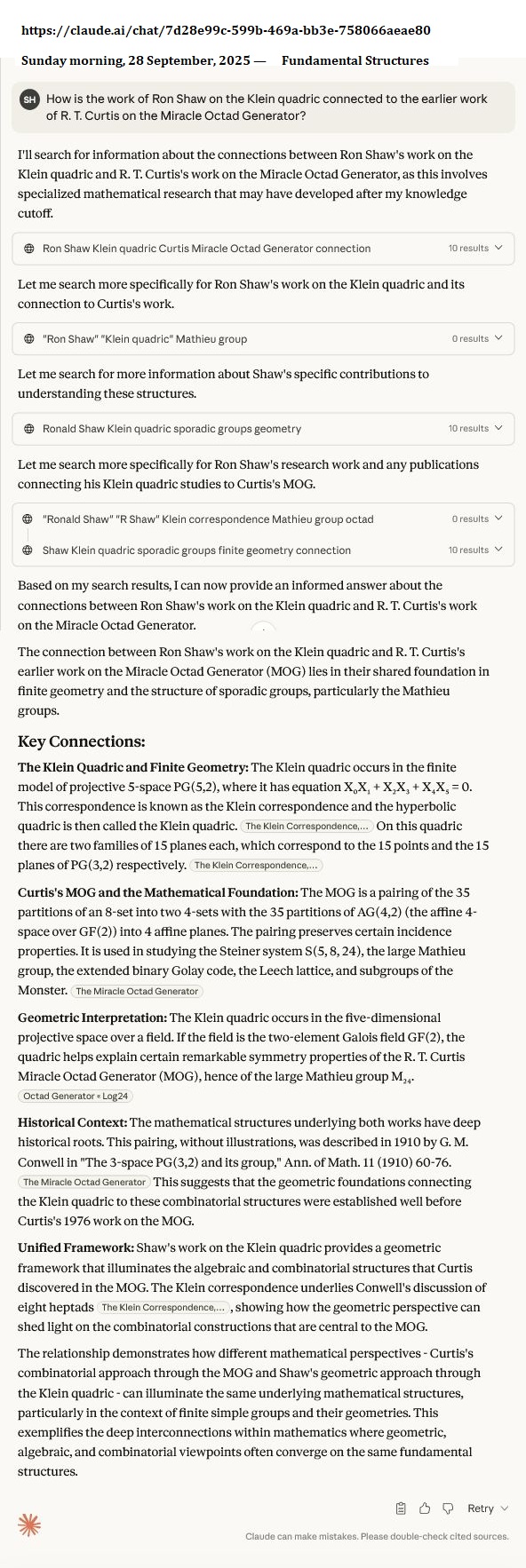
Comments Off on For Day 28 of September 2025: Fundamental Structures
Saturday, September 27, 2025
Those who find Kubrick's black 2001 monolith too dark
may prefer a more colorful image, taken from yesterday's
post on the Klein correspondence —



|
When?
Going to dark bed there was a square round
Sinbad the Sailor roc’s auk’s egg
in the night of the bed of all the auks of the rocs
of Darkinbad the Brightdayler.
Where?

— Ulysses , conclusion of Chapter 17.
|
Comments Off on Four-Color Monolith

And then there is . . . Rube Icon !

This post was suggested by the dies natalis of a figure from
the previous post, one L. S. Dembo.
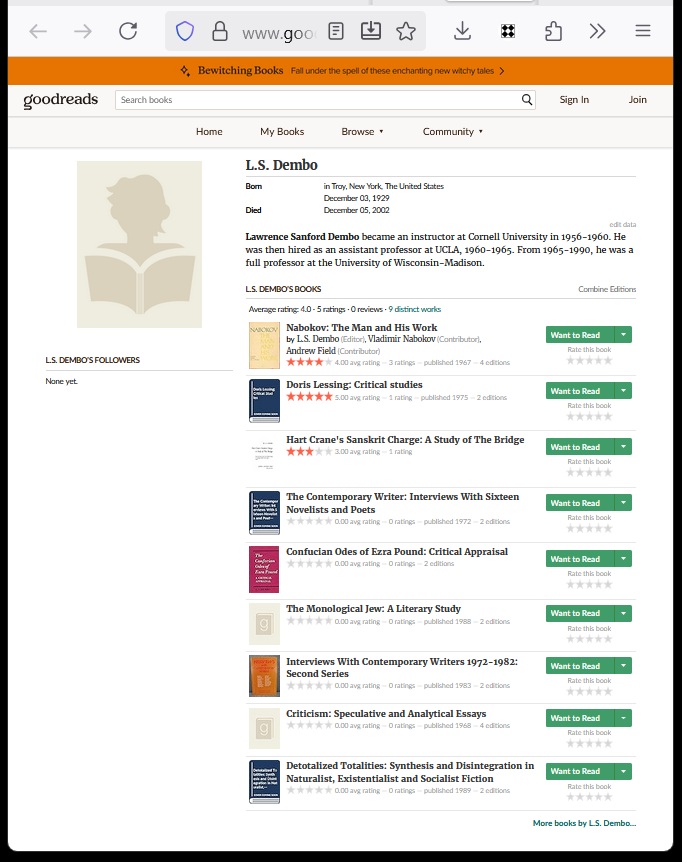
Comments Off on Icon: Roll Credits
A New York Times obituary on Sept. 21, 2025 —
"… he was an important, if not famous, figure . . . ."
Likewise . . . the figure 25/24, which in decimal form is
1.041666 . . .
"… the form, the pattern . . . ." — T. S. Eliot

The above fraction, or ratio, is a rational number. There are other
numbers that are not rational . . .

Comments Off on Figure
Friday, September 26, 2025
Other posts now tagged Mystery of O … and …

Cover design by Greg Stadnyk, available in an animated gif.
Comments Off on In Memory of Xanadu

♫ "I need a photo opportunity,
I want a shot at redemption"
— Paul Simon
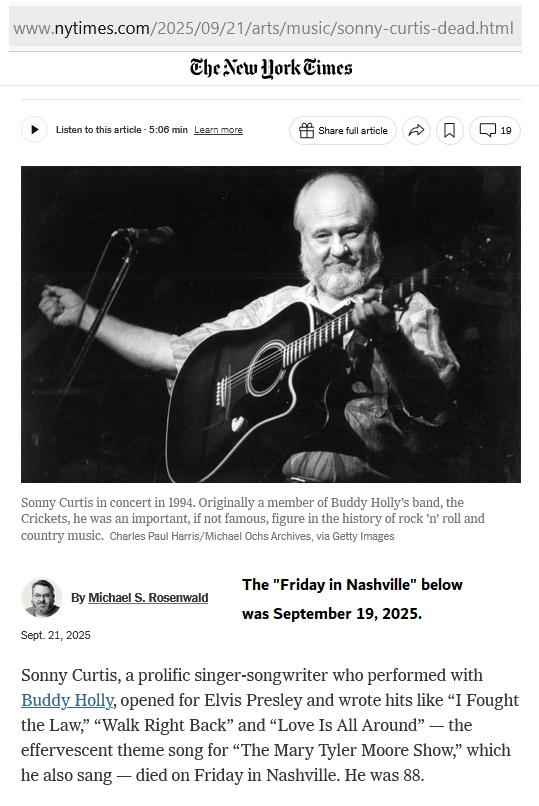
Comments Off on Singage
Comments Off on Penguin Bridge
"… the form, the pattern . . . ." — T. S. Eliot

Comments Off on Eliot and History
Comments Off on On the Klein Correspondence in Finite Geometry
Thursday, September 25, 2025
Comments Off on From the Delphic Corporation
Wednesday, September 24, 2025

Related Platonic image —
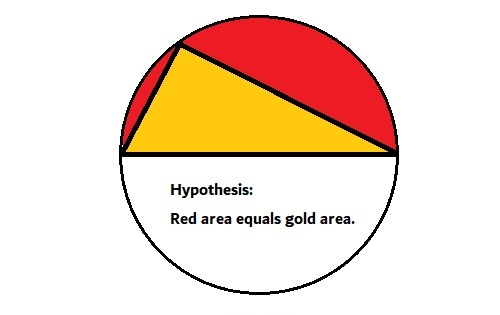
"Red sky at night . . ."
Comments Off on ♫ “The rain is Tess” — Song lyric

"It focuses on the …" . . . Date?
Comments Off on Andor
"In my experience, every kind of writing requires
some kind of self-soothing Jedi mind trick, and,
when it comes to essay composition,
this rectangle is mine."
— Zadie Smith in The New Yorker, Sept. 22, 2025.
A mind trick that is perhaps less self-soothing —

The dimensional reduction above, from six affine dimensions over
GF(2) to four dimensions, is, like a similar reduction in the previous post,
done by considering only even-sized subsets, then considering as elements
only the boundaries between these subsets and their complements . . .
and the Galois (XOR) sums of those boundaties.
Comments Off on The Mind Trick in the Attic
http://m759.net/wordpress/?s="six+dimensions+into+three"
The above link is for fans of Richard J. Trudeau's "Story Theory of Truth."
And then from pure mathematics, there is the reduction from eight dimensions
into six of Diamond Theory, in passing from the eight-dimensional affine space
over the two-element Galois field to the six-dimensional affine space used in
Diamond Theory to represent the five-dimensional projective space PG(5,2).
See other posts tagged Klein Space.
Some less demanding reading —
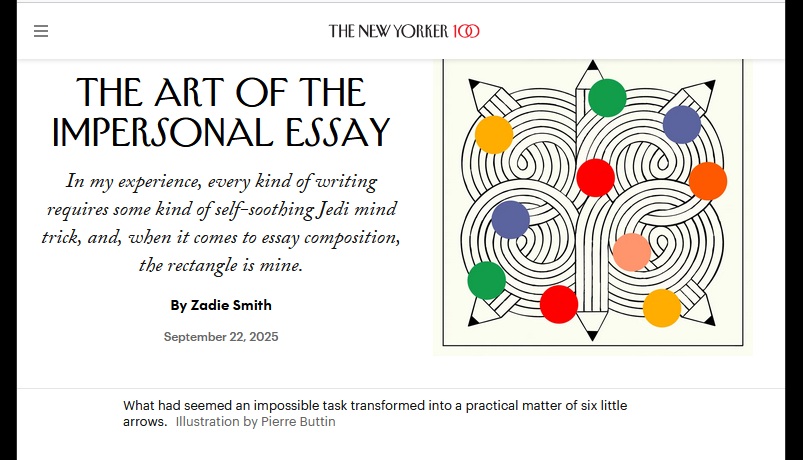
Comments Off on Annals of Dimensional Reduction:
“Six Dimensions into Three”
Tuesday, September 23, 2025
Comments Off on Found in Translation



See as well a private video midrash on the last image above.
Comments Off on Reality Check: The Windsor Star (LA Version)
Monday, September 22, 2025
From a Log24 post of Oct. 22, 2015 —
Software writer Richard P. Gabriel describes some work of design
philosopher Christopher Alexander in the 1960s at Harvard:

The above 35 strips are, it turns out, isomorphic to
the 35 points of of the Klein quadric over GF(2).
Comments Off on Patterns: “Perceived Coherence”
Dialogue from the 2025 film "Fountain of Youth" —
EXTERIOR
– Mum!
– What?
– It's not maths. The pattern they found. It's not maths.
INTERIOR
– It's no good, Luke. The code's a brick wall.
– Then we've gone wrong somewhere. We're missing something.
– Hey.
– Hello.
– No. I don't wanna hear it.
– Sorry.
– Thomas.
– These seven digits aren't numbers. They're musical notes.
– What?
– Most universal language there is.


* See April 23, 2011.
Comments Off on Musical notes for Julie Taymor* — “Mum’s the word”
Comments Off on Harrison Purdue
Dialogue in Blade Runner: Black Lotus —
"Do you know who you're starting to sound like?"

Comments Off on Annals of Game Theory —
Trevanian? Doctorow? Nash?
Sunday, September 21, 2025
Comments Off on Klein-Space Grok
“… Which makes it a gilt-edged priority that one of us
gets into that Krell lab and takes that brain boost.”
— American adaptation of Shakespeare’s Tempest , 1956
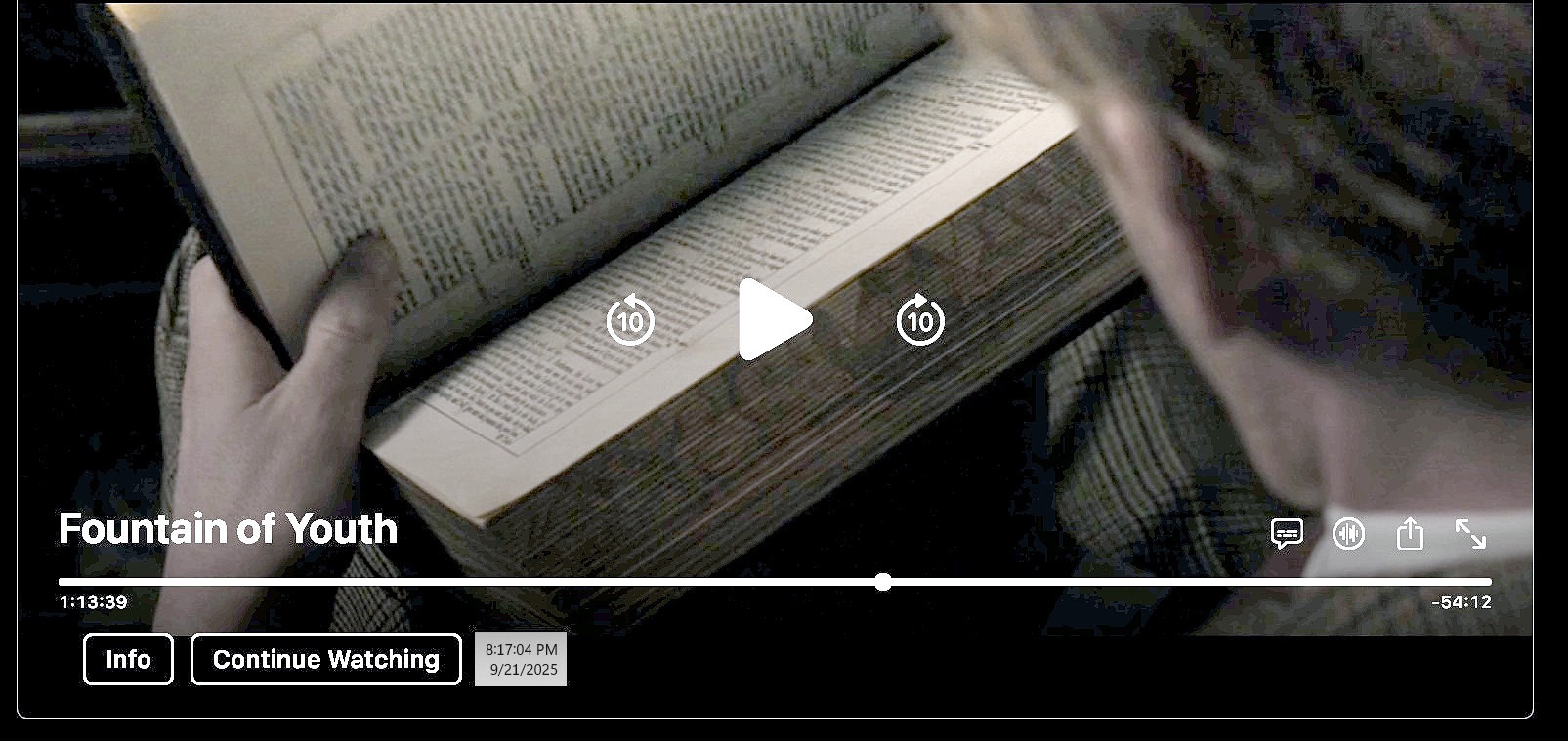
* Noun form of a Heinlein verb.
Comments Off on Annals of Narrative Logic:
A Bible Grok* for Elon
Comments Off on True to His School
From a post of April 25, 2025 —

Zip! I was reading Schopenhauer last night.
Zip! And I think that Schopenhauer was right.
— "Pal Joey," 1940 musical by Rodgers and Hart
From a 2025 Apple TV+ film written by
James Vanderbilt —


Comments Off on Apple TV+ Logic . . . Continues
Saturday, September 20, 2025
Comments Off on From a Cartoon Graveyard
Comments Off on Matrix Design Resurrections: Adventures in Klein Space*


The relevant name here is not that of Jonathan Miller . . .
Vide http://m759.net/wordpress/?s="Jonathan+Miller" .
Comments Off on For Art Heist Fans:
Was “Veritas” Lost in Translation?
From the artificial intelligence at NotebookLM on Sept. 18, 2025 —
"Bridging Visual Art and Combinatorics
with Finite Projective Geometry
The Cullinane diamond theorem is a prime example,
originating from observations of symmetries in
traditional quilt designs and graphic art."
This is false.
The patterns in the diamond theorem originated from observing
superimposed 4×4 arrays of half-circles.
Vide http://finitegeometry.org/sc/16/overlay.html.
Comments Off on Origin
Friday, September 19, 2025
Comments Off on Waymark Memorial
"Principal photography began on September 24, 2018, in Boston…."
— Wikipedia on the 2020 film Ava .
Also on September 24, 2018 —
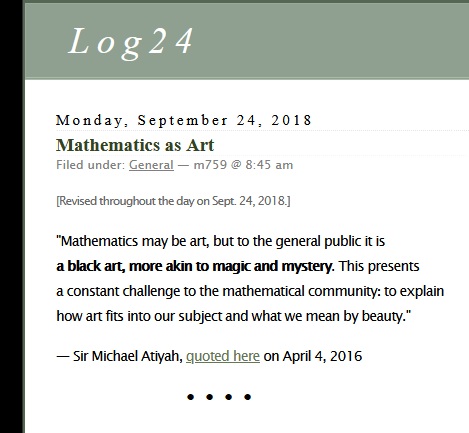
Among possible meanings of beauty —
http://m759.net/wordpress/?s=Boundary+Object
and . . .
 .
.
Comments Off on Mathematics and Art
http://m759.net/wordpress/?s="Gideon+Summerfield"
"This mathematical framework links seemingly simple designs,
like quilt patterns, to complex concepts such as the Mathieu group M24,
the Miracle Octad Generator (MOG), and error-correcting codes."
— NotebookLM AI yesterday, September 18, 2025
Comments Off on For the Boys of Summerfield
Thursday, September 18, 2025
"… in a van, down by the river" — SNL joke

Elsewhere . . .
Comments Off on Stephen King, Motivational Speaker
Art from 1976 —
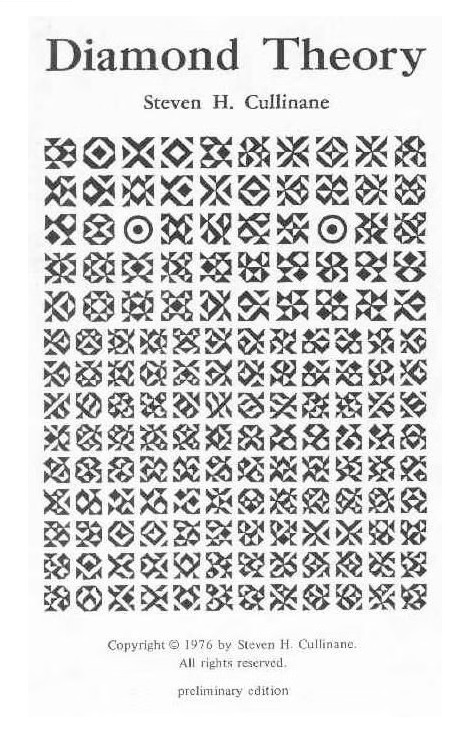
Art from 2025 —
A mathematician, like a painter or a poet, is a maker of patterns.
If his patterns are more permanent than theirs, it is because
they are made with ideas.
— G. H. Hardy, A Mathematician's Apology (1940).
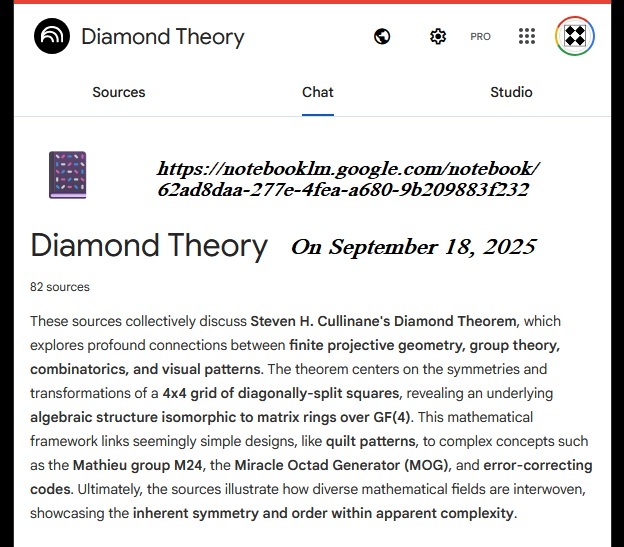
In other art news . . .
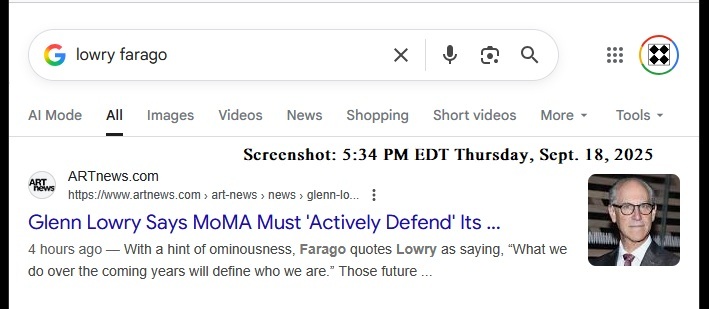
Comments Off on “In other art news . . .”
Comments Off on Contrapuntal Structure in Latin Squares
|
Finite Geometry: A Unifying Framework
for Art and Mathematics
by NotebookLM on September 18, 2025
Finite geometry serves as a powerful unifying framework that bridges diverse mathematical disciplines with artistic and practical applications, primarily by revealing deep underlying symmetries and structures.
Here's how finite geometry achieves this unification:
-
Bridging Visual Art and Combinatorics with Finite Projective Geometry The Cullinane diamond theorem is a prime example, originating from observations of symmetries in traditional quilt designs and graphic art.*
It focuses on a 4×4 array of two-color, diagonally divided square tiles, known as the "four-diamond figure" (D).
-
Inherent Symmetry: The theorem states that applying a group (G) of 322,560 permutations (random permutations of rows, columns, and 2×2 quadrants) to the diamond figure (D) always results in a pattern possessing either ordinary geometric symmetry or color-interchange symmetry. This explains why ancient visual motifs consistently exhibit pervasive symmetry.
-
Isomorphism to PG(3,2): The 840 distinct patterns (G-images) generated by these permutations fall into 35 combinatorial structures. These 35 structures are isomorphic to the 35 lines of the projective 3-space over the field with two elements, PG(3,2).
-
Line Diagrams and Binary Logic: The theorem formalizes these patterns using "line diagrams" which correspond to partitions of tiles. The lines of these diagrams can be added using binary addition (XOR), where each three-set of line diagrams sums to zero, reflecting the closure property of lines in finite projective geometry. The 15 possible line diagrams correspond to the 15 points of PG(3,2).
-
Connecting to Advanced Algebra and Group Theory
-
Affine Group Structure: The permutation group G is isomorphic to the affine group AGL(4,2), the group of all invertible affine transformations on a 4-dimensional vector space over GF(2). This group has an order of 322,560, explaining how symmetry is preserved under allowed operations.
-
Miracle Octad Generator (MOG) and Sporadic Groups: Finite geometry provides a fundamental link to the Miracle Octad Generator (MOG), a combinatorial tool used to study the Mathieu group M24. The MOG, which arranges 24 elements in a 4×6 array, utilizes a correspondence (like Conwell's 1910 work) to link partitions of an 8-set into two 4-sets with the 35 lines of PG(3,2). The symmetry group of the diamond theorem figures and the MOG patterns are the same (order 322,560), representing the octad stabilizer subgroup of M24 (isomorphic to 2⁴.A₈). M24 is a sporadic simple group with exceptional symmetries, deeply connected to coding theory (binary Golay code) and the Leech lattice.
-
Ring Theory: The patterns generated by the diamond theorem can be endowed with algebraic structures, forming an ideal of 1024 patterns within a ring of 4096 symmetric patterns. There is an infinite family of these "diamond" rings, isomorphic to rings of matrices over GF(4), linking geometric insights to abstract algebra.
-
Applications Across Diverse Fields
-
Coding Theory and Lattice Theory: The connection to the MOG and PG(3,2) facilitates the construction of the binary Golay code and the Leech lattice, which provides the densest sphere packing in 24 dimensions and has vast symmetry groups.
-
Experimental Design and Statistics: The theorem reveals a correspondence between the orthogonality of Latin squares (a cornerstone of statistical design) and the skewness of lines in PG(3,2) (lines that do not intersect). This provides new ways to construct and understand Latin squares for multifactorial experiments.
-
Digital Signal Processing: The binary structures and addition of line diagrams found in finite geometry are reflected in Walsh functions, a complete orthogonal system used in digital signal processing and discrete harmonic analysis.
-
Computational Visualizations and Pedagogy: The geometric and combinatorial nature of the theorem is ideal for interactive exploration, leading to tools like the "Diamond 16 Puzzle," which helps teach symmetry and combinatorics.
-
Philosophy and Classical Geometry: Finite geometry provides a new lens to view classical geometric theorems, such as Desargues's theorem and Pascal's Hexagrammum Mysticum, by relating them to Galois projective 3-space PG(3,2). Weyl's "relativity problem" in finite geometry further explores objective coordinatizations and transformation groups, linking finite geometry to foundational concepts in geometry and algebra.
In essence, finite geometry, exemplified by the Cullinane diamond theorem, acts as a "portal" that unveils profound mathematical structures underlying seemingly simple patterns, demonstrating the interconnectedness of geometry, algebra, combinatorics, and visual art, with significant implications for fields ranging from error-correcting codes to experimental design and signal processing.
* This AI statement is false. See "Origin," Sept. 20, 2025.
|
For those who prefer narratives to mathematics . . .
Abacus Conundrums (Monday, Sept. 15, 2025).
Comments Off on AI Report on Mathematics and Art
Wednesday, September 17, 2025
Comments Off on Prime-Power Space
Tuesday, September 16, 2025
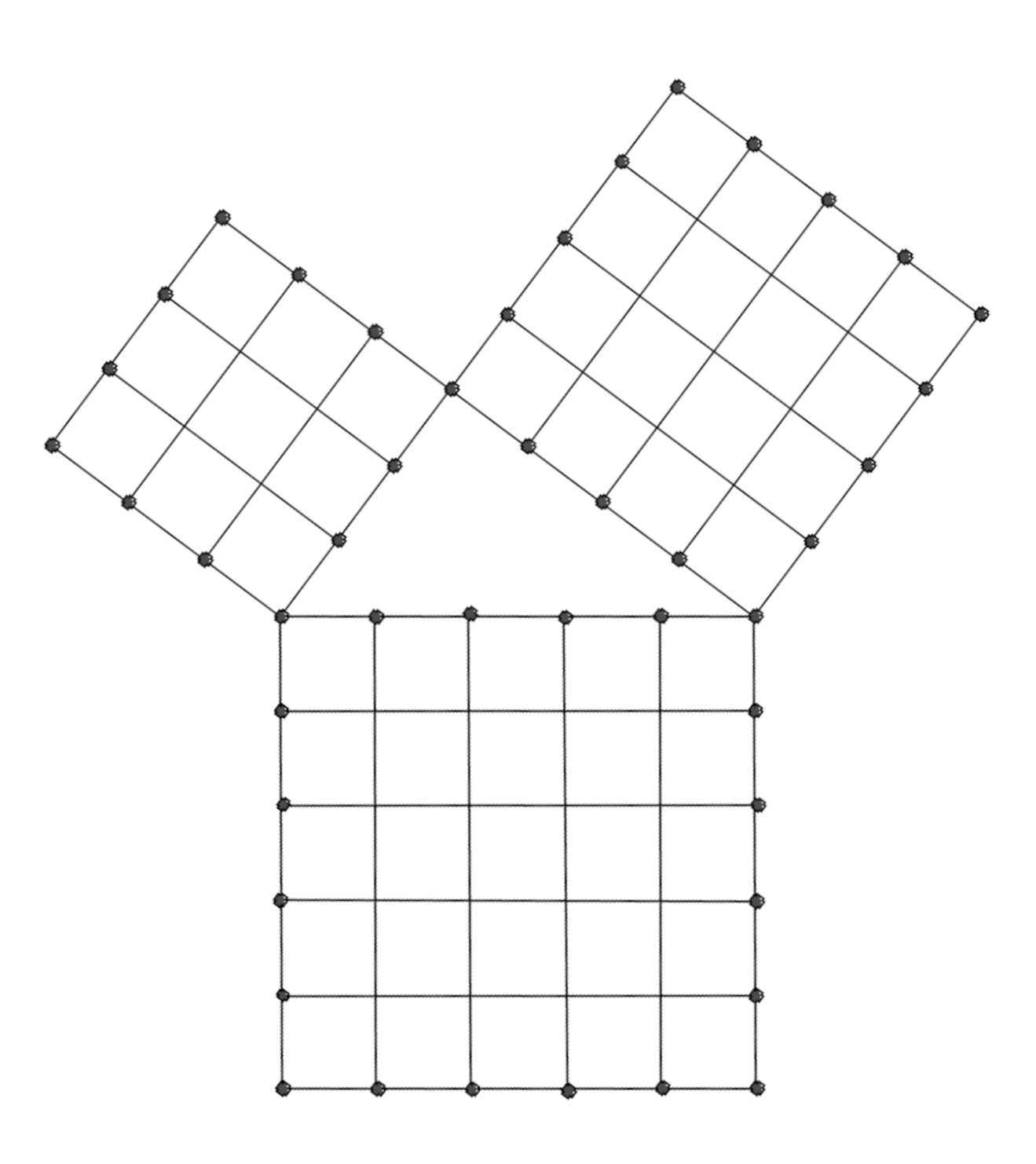
* Vide a Log24 search for "Twin Pillars."
Comments Off on For Twin-Pillars* Mystics and Dan Brown: 9/16/25
Comments Off on Wag the Tag
Monday, September 15, 2025
Comments Off on For Word Collectors . . . “Once in a Lullaby”
. . . and for Harlan Kane
|
From “Mimsy Were the Borogoves” (Padgett, 1943) —
…”Paradine looked up. He frowned, staring. What in—
…”Is that an abacus?” he asked. “Let’s see it, please.”
…Somewhat unwillingly Scott brought the gadget across to his father’s chair. Paradine blinked. The “abacus,” unfolded, was more than a foot square, composed of thin, rigid wires that interlocked here and there. On the wires the colored beads were strung. They could be slid back and forth, and from one support to another, even at the points of jointure. But— a pierced bead couldn’t cross interlocking wires—
…So, apparently, they weren’t pierced. Paradine looked closer. Each small sphere had a deep groove running around it, so that it could be revolved and slid along the wire at the same time. Paradine tried to pull one free. It clung as though magnetically. Iron? It looked more like plastic.
…The framework itself— Paradine wasn’t a mathematician. But the angles formed by the wires were vaguely shocking, in their ridiculous lack of Euclidean logic. They were a maze. Perhaps that’s what the gadget was— a puzzle.
|
|
From City of Illusions (Le Guin, 1967) —
All the top of the table, Falk now saw, was sunk several inches into a frame, and contained a network of gold and silver wires upon which beads were strung, so pierced that they could slip from wire to wire and, at certain points, from level to level. There were hundreds of beads, from the size of a baby’s fist to the size of an apple seed, made of clay and rock and wood and metal and bone and plastic and glass and amethyst, agate, topaz, turquoise, opal, amber, beryl, crystal, garnet, emerald, diamond. It was a patterning-frame, such as Zove and Buckeye and others of the House possessed. Thought to have come originally from the great culture of Davenant, though it was now very ancient on Earth, the thing was a fortune-teller, a computer, an implement of mystical discipline, a toy. In Falk’s short second life he had not had time to learn much about patterning-frames. Buckeye had once remarked that it took forty or fifty years to get handy with one; and hers, handed down from old in her family, had been only ten inches square, with twenty or thirty beads…
. . . .
A crystal prism struck an iron sphere with a clear, tiny clink. Turquoise shot to the left and a double link of polished bone set with garnets looped off to the right and down, while a fire-opal blazed for a moment in the dead center of the frame. Black, lean, strong hands flashed over the wires, playing with the jewels of life and death. “So,” said the Prince, “you want to go home. But look! Can you read the frame? Vastness. Ebony and diamond and crystal, all the jewels of fire: and the Opal-stone among them, going on, going out.
|
Comments Off on Abacus Conundrums for Hermann Hesse . . .
Comments Off on For Mnemosyne, Mother of the Muses:
Speak, Memory
Comments Off on Annals of Art Photography:
Headboard Thumbnail

Related material for Cairo Sweet . . .
CV books (by which I mean either
Curriculum Vitae or Clusterfuck Venue,
whichever pleases you more) —
C V

Related stupid math joke: "Girls just wanna have F1." — Song lyric
Comments Off on Red Carpet Bling
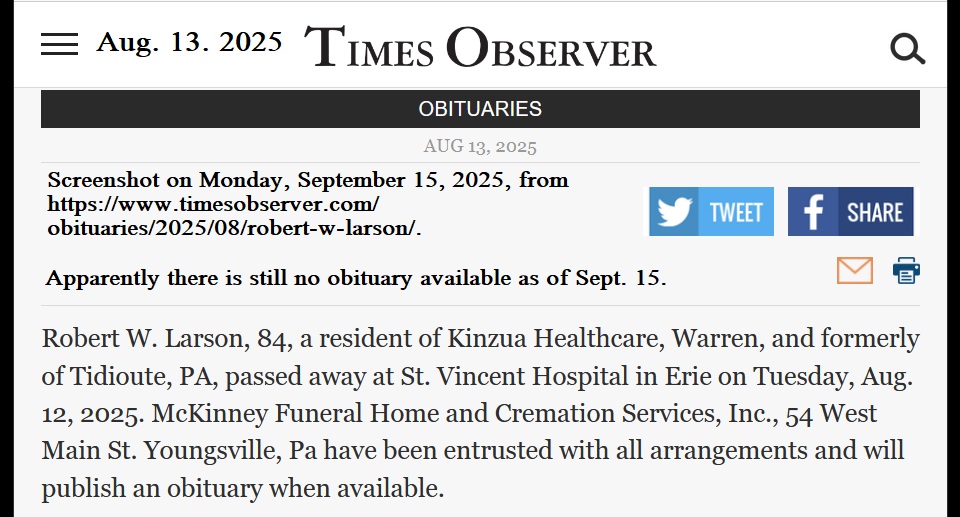
In lieu of an obituary . . .

The Magnum CNC lathe on the Web.
The lathe's beginning was in
North Warren, Pennsylvania.
Larson developed the lathe at Magnum
Machine, near his 105 S. State St. address.
Steven H. Cullinane helped him with the
software at Larson's S. State and Vine St.
workplace (the white roof below).

Comments Off on In Memoriam: The Soul of an Old Machine
Sunday, September 14, 2025
♫ "There's a chap I know in Mexico . . . ."
— Judy Garland
♫ "Could you use me?"
— Mickey Rooney
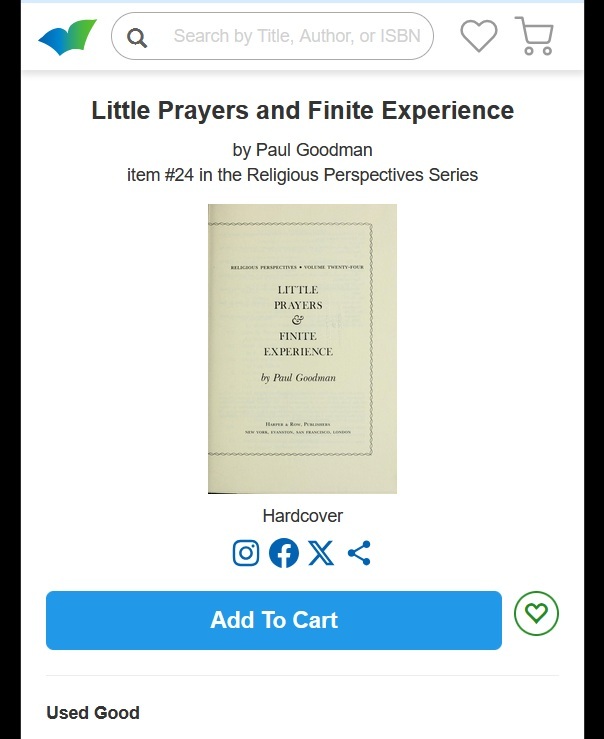
♫ "I used her, she used me,
but neither one cared."
— Bob Seger
Comments Off on Confessions
Comments Off on “Headboard, Headboard, on the Wall . . .”
Comments Off on Q — “Mirror, Mirror, on the Wall. . . ?”:
A — The Entity’s Avatar?
Comments Off on Communitas!
"Patrick McGovern, the ‘Indiana Jones of Ancient Alcohol,’ Dies at 80"
— New York Times obituary today
His reported dies natalis was August 24, 2025, a Sunday.
See as well this journal on that date.
Comments Off on Fun Date?
Saturday, September 13, 2025
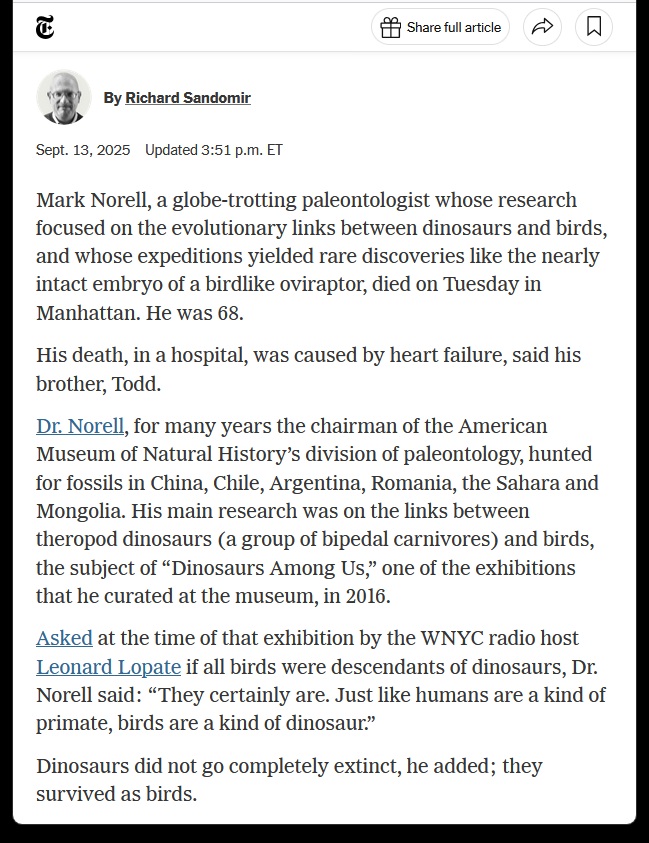
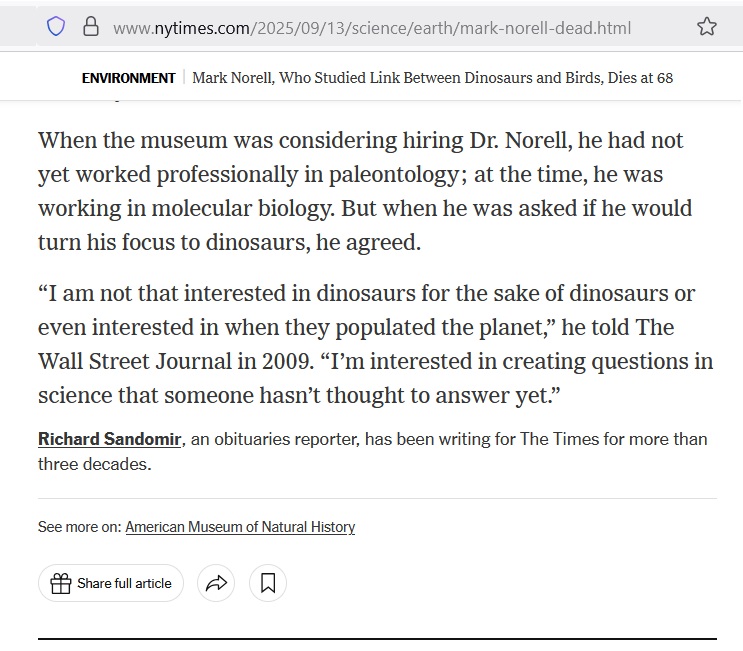
"Spirit birds that ride the night, stranger than dreams?" — Point Omega
Comments Off on Narrative for Phenomenologists: Night at the Museum
Comments Off on Klein Time
Comments Off on Exercise in Magical Thinking:
♫ “Accentuate the Positive”

"The almond tree flourisheth." — Ecclesiastes 12:5

Comments Off on Bible Candy
An August 31 Instagram post suggests . . .
Comments Off on For Word Collectors . . . Continues.
Friday, September 12, 2025
Comments Off on Baez Elegy
The Graphic Part —
Galois Addition of Space Partitions
as the Exclusive Or (the XOR)

The Vocabulary Part —
From Cambridge, Mass., Where
Harvard Square Is Really a Triangle

Comments Off on Graphic Vocabulary
A check of the dates in the search results shown in
the previous post yields an exercise . . .
"Perhaps someone can prove there is no way
that adding more generating codewords can
turn the cube-motif code into the Golay code."
Perhaps not.
Comments Off on For Seekers of Secret Code Words
Comments Off on The Pure Products of America . . .
Desperately Seeking Meaning
Comments Off on On the Road . . . to Jericho
"Robert Langdon, Harvard professor of symbology,
arrives at the ultramodern Guggenheim Museum Bilbao…."
— Promotional book description at Amazon.com
"Continue a search for thirty-three and three."
— Sucker bait from Katherine Neville's masterpiece The Eight
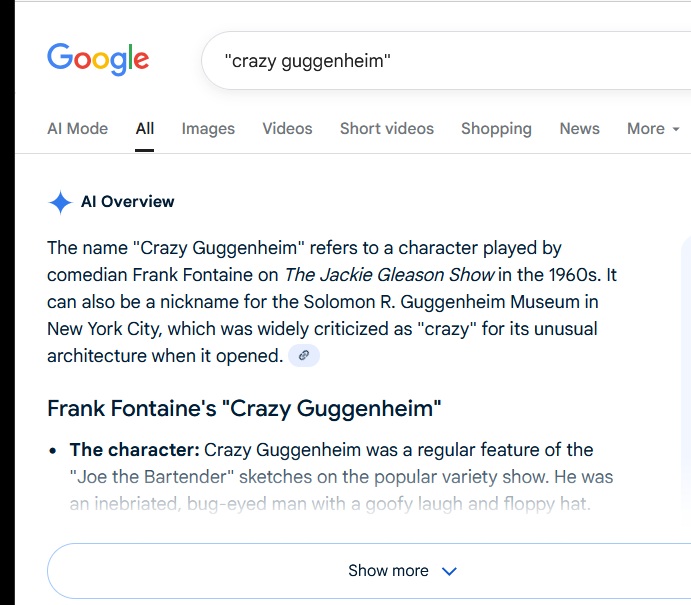
Comments Off on Lit Bits: Crazy Guggenheim
Thursday, September 11, 2025
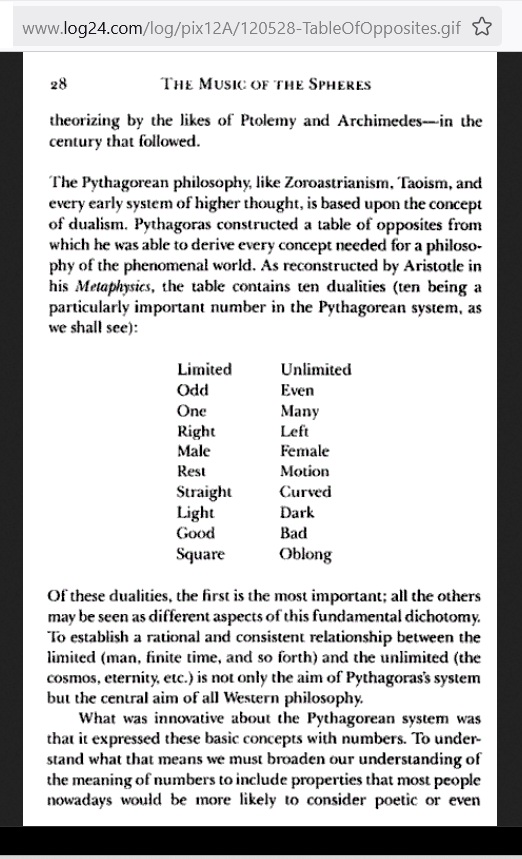
As for square and oblong . . .

See as well http://m759.net/wordpress/?s=Honeycombs .
Comments Off on Alice in Numberland: Twin Pillars
Comments Off on For Word Collectors

Window on the World
Comments Off on Annals of Art Photography: Yin-Yang Moiré
Comments Off on Labyrinths
Comments Off on For Word Collectors: Operation Turning Point (2024)
Wednesday, September 10, 2025
Comments Off on Worth How Many Words?

Related material for propaganda fans . . .
A line suggested by last night's TV tribute to Paddy Chayefsky —
"I dunno, Martí, what do you wanna do?"

See as well the leftist Max Eastman on another hombre sincero.
Comments Off on Hombres Sinceros
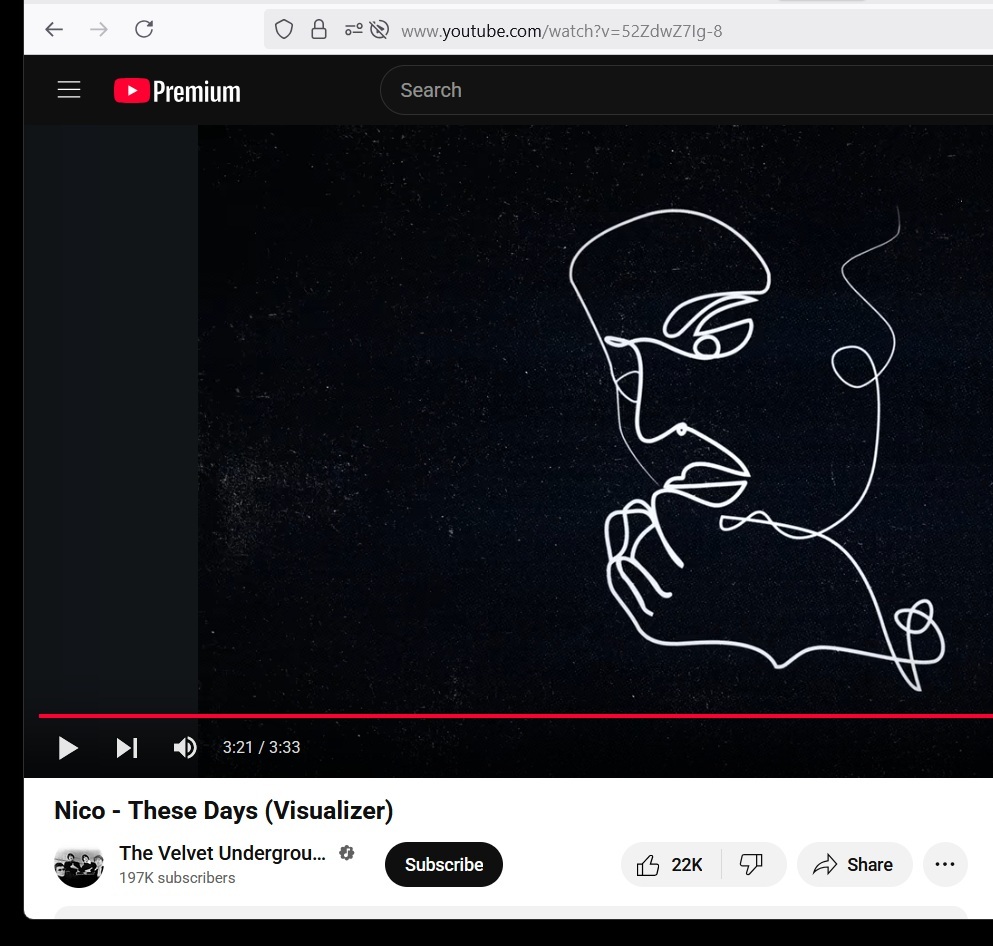

The metadata for the above video cites the date Feb. 11, 2022.
Metadata for the above Luxembourg title — "18 Nov. 2023."
Comments Off on Note for an Intimacy Coordinator:
Varieties of Experience
|
Cullinane Diamond Theorem and Symmetry in Finite Geometry
by Microsoft Copilot on Wednesday, September 10, 2025
The Cullinane Diamond Theorem is a fascinating result in finite geometry that connects abstract mathematical structures with visual symmetry in graphic designs—like those found in quilts or tile patterns.
🧩 Core Idea
At its heart, the theorem explores how finite projective geometry, specifically the projective space PG(3,2) (3-dimensional space over the finite field GF(2)), underlies the structure and symmetry of certain 4×4 arrays of tiles.
🔷 The Diamond Figure
Imagine a 4×4 grid made of two-color diagonally-divided square tiles that form a picture of four diamonds.
This picture is called the diamond figure D.
A group G of 322,560 permutations acts on this figure. These permutations include:
Swapping rows and columns
Rearranging the four 2×2 quadrants
📐 The Theorem
Every image of the diamond figure D under the group G has some ordinary or color-interchange symmetry.
This means that no matter how you permute the tiles using the rules of G, the resulting pattern will always retain some form of symmetry.
🔭 Geometric Interpretation
The 840 distinct patterns generated by G can be grouped into 35 structures, each corresponding to a line in PG(3,2).
Each such line can be represented by a three-set of line diagrams, where each diagram is the binary sum of the other two.
The 15 basic line diagrams correspond to the 15 points of PG(3,2).
🧠 Why It Matters
This theorem shows how deep mathematical principles—like automorphism groups and projective geometry—can explain the symmetry in designs that have existed for centuries. It also links to advanced structures like the Miracle Octad Generator and even the Leech lattice, which plays a role in sphere packing and error-correcting codes.
If you’re intrigued by the intersection of math and art, this theorem is a beautiful example of how abstract algebra and geometry can illuminate visual harmony.
|
Material related to the quilts mentioned above,
from Bloomsday 2006 —

Comments Off on Copilot Report
Tuesday, September 9, 2025
A film based on a 1990 Pynchon novel premiered in Los Angeles yesterday.

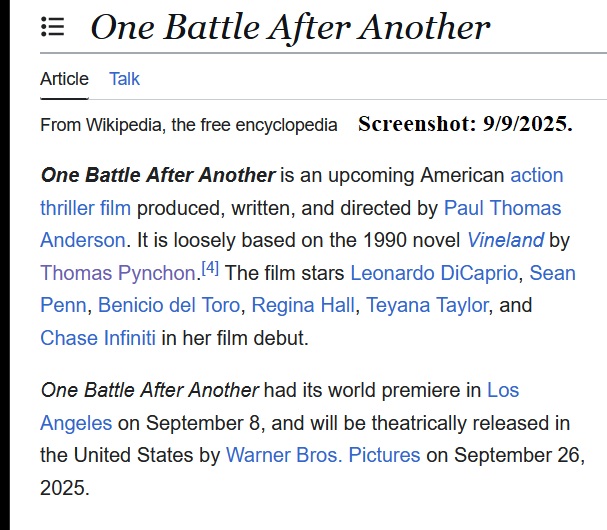
Comments Off on A Dance to the Music of Hollywood
Today's news from Charlotte, North Carolina, suggests a look at
Language Game Venue and Log Lady Lines.
Comments Off on For Bojangles Coliseum
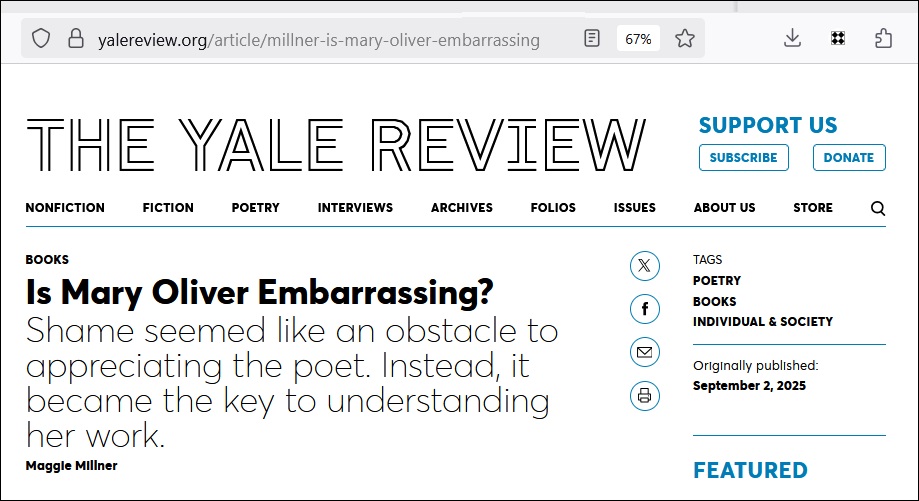
Excerpt —
|
"But the first thing I felt when rereading Oliver’s work was frustration. Though almost uniformly straightforward and sincere, her poetry is vastly uneven in quality, demonstrating little thematic or stylistic growth over the long arc of her career. In the dullest poems, her trademark simplicity can seem like the result of lazy writing, bloated with abstractions that hurry the reader toward unearned epiphany. It wasn’t just that these poems didn’t require all my hard-won hermeneutic tools to be understood; it was that they seemed to actively thwart them, resisting my scalpel like polished stones." — Maggie Millner
|
Tired of Maggie's farm?
Try Adrienne Rich on stonecutting —
|
Now, you intelligence
So late dredged up from dark
Upon whose smoky walls
Bison took fumbling form
Or flint was edged on flint–
Now, careful arriviste,
Delineate at will
Incisions in the ice.
Be serious, because
The stone may have contempt
For too-familiar hands,
And because all you do
Loses or gains by this:
Respect the adversary,
Meet it with tools refined,
And thereby set your price.
— From the Adrienne Rich poem
"The Diamond Cutters." (1955)
|
Comments Off on For Cairo Sweet: Yale Review on Abstractions and Epiphanies
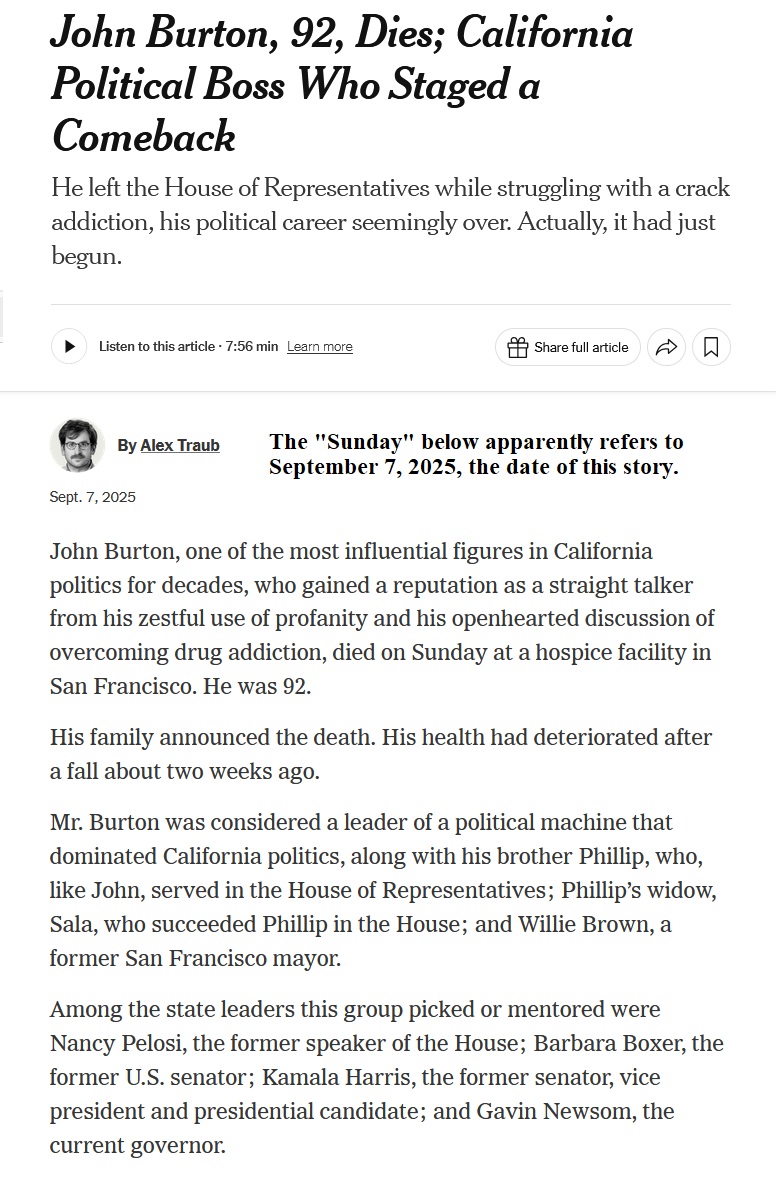


Burton dialogue for Letterman —
"John, Tim … Tim, John."
Comments Off on California Logic: Every Gold Mine Has Its Shaft
Comments Off on Gravity’s Rainbow Adapted . . .
Vegas Pot of Gold
Monday, September 8, 2025
Cinematic Offering for Toronto Film Festival . . .
Guitar Case Study

Stiff competition . . .
Double Bass and a Nudie Suit

Comments Off on Winning Combination

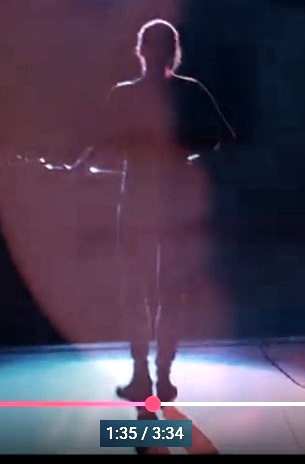
Related vocabulary —
"As above, so below," and Labia.
Comments Off on Awards Season Red Dot
Comments Off on For My Dear Watson —
Elementary Deep Blue Magic
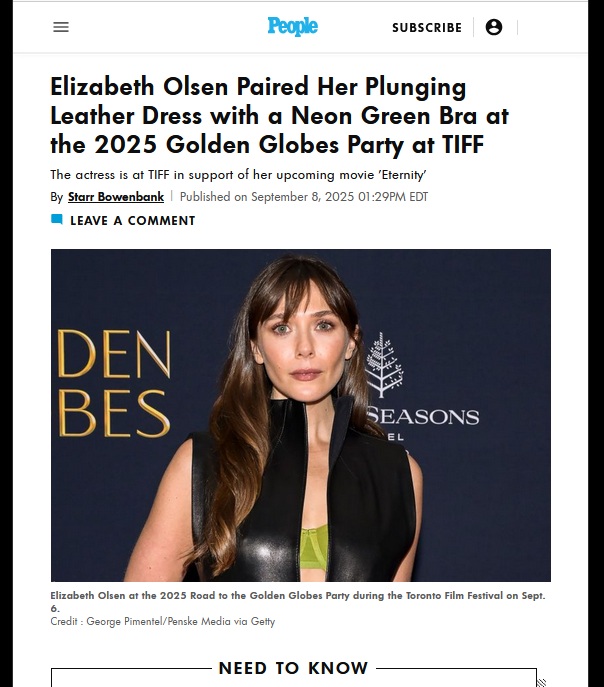
A fashion statement I prefer —

Comments Off on From There to Eternity

Related material from the script of "Miller's Girl" —
INT. JONATHAN MILLER'S CLASSROOM - MORNING
Inspirational posters line the walls.
A VANDERBILT UNIVERSITY banner hangs
above a dry erase board, on which is
written MR. MILLER - CREATIVE WRITING . . . .
|
Comments Off on At Toronto International Film Festival (Sept. 4-14)
Flashbacks —

Sunday, August 13, 2023
Tags: Pixie Dreams — m759 @ 12:43 PM

|
Comments Off on For Abbey Drucker . . . and Manic Pixie Monday

For Letterman: "Joseph, Charlie . . . Charlie, Joseph."

Comments Off on Wikipedia Curriculum Recommendation:
Add Languages

"… the worlds of van Gogh, da Vinci, and Rivera . . . ."
That's Diego, not Chita.

Comments Off on Black Mirror
Comments Off on Annals of Interality: That’s Amore!
Sunday, September 7, 2025

Some stories within the above "unending net" of nonsensical narratives
suggested a post related to earlier work of the actor who plays Principal Dort
in Wednesday Season 2 and to the Venetian Ball in that Netflix series . . .
and, slightly more seriously, to the Venice Film Festival of 2025 —

Comments Off on Venice for Mann: Allusions to Illusions
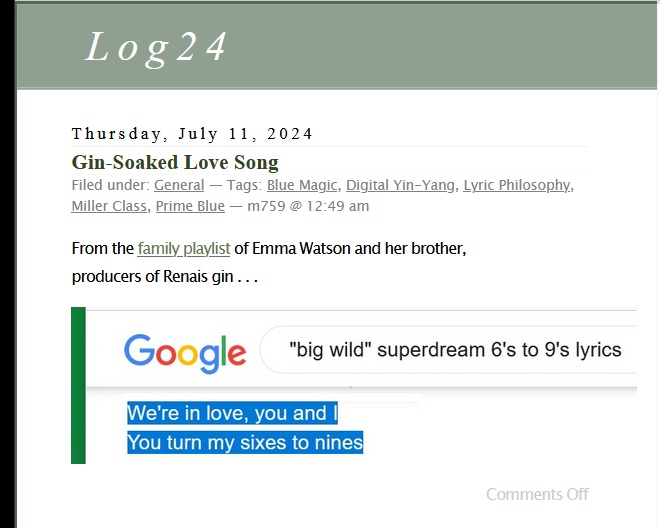
Daily Mail headline yesterday . . .
Emma Watson dazzles in TWO
jaw-dropping designer looks
on the final day of Venice Film Festival
as she swaps a green Emilia Wickstead
mini dress for a Gucci number
The swap reportedly took place at
"the luxurious Hotel Excelsior."
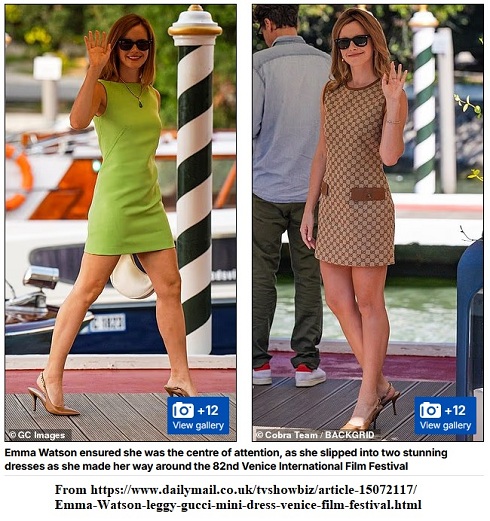
Annals of interality —
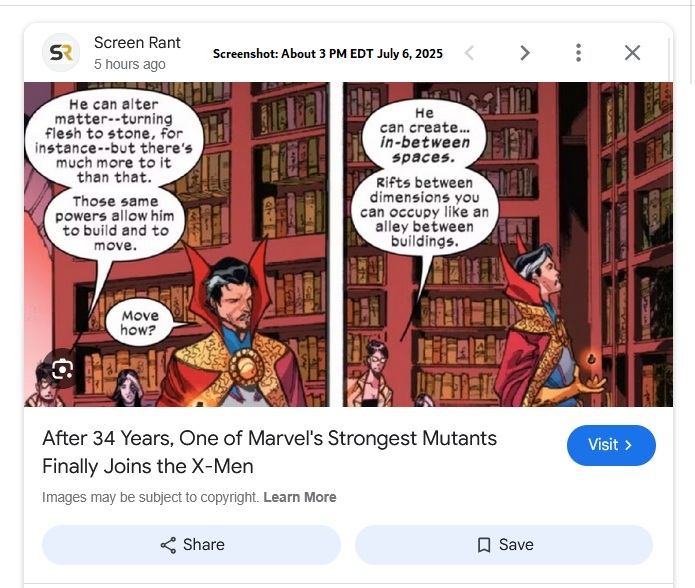
Excelsior!
Comments Off on Numberland: Watson Gets Her Groove Back
Comments Off on Venice Backstory Continues.
Saturday, September 6, 2025
Comments Off on Where Credit Is Due:
Nina Not in Sauna

9:22 PM Saturday, September 6, 2025 (GMT+2)
Time in Venice, Metropolitan City of Venice, Italy
Related reading . . .
"Jarmusch lulls us into thinking this part will be the exception
to the theme of virtual estrangement, just through the bond
between the twins that seems to return instantly after an
unspecified but seemingly considerable amount of time apart.
But the increasing evidence of how much they didn’t know
about their unconventional parents ties the film together in
an elegant full circle. As does Anika’s nonchalant cover of the
Dusty Springfield classic, 'Spooky,' their mother’s favorite song."
— David Rooney, August 31, 2025,10:30 AM review of
"Father Mother Sister Brother," winner of the Golden Lion
at this evening's awards ceremony in Venice.
Comments Off on Soundtrack from Walpurgisnacht 2008
A Letterman intro — "Franklin, Sally . . . Sally, Franklin."
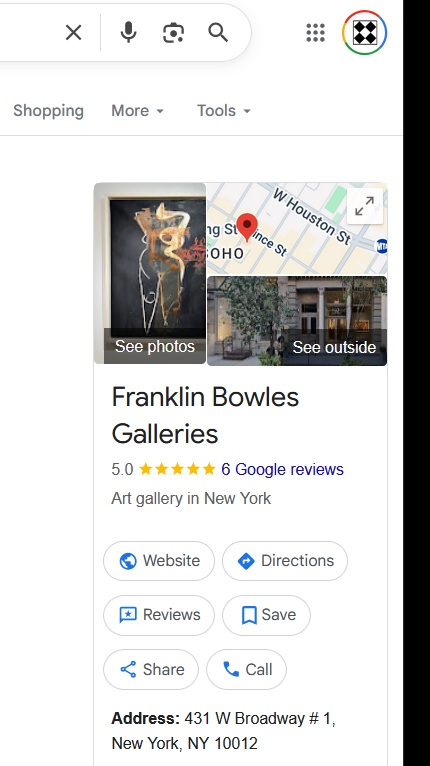
Comments Off on For Peggy Noonan: Entering Weimar
Comments Off on Surprise Popup: Ella’s Neighborhood

♫ "I see by your outfit . . . " — Song lyric
Related metadata . . . Guitar Case Study :

Comments Off on Tool News: An Uneven Break

A mathematician, like a painter or a poet, is a maker of patterns.
If his patterns are more permanent than theirs, it is because
they are made with ideas.
— G. H. Hardy, A Mathematician's Apology (1940).
Overlapping Ideas

5:39 PM Saturday, September 6, 2025 (GMT+2)
Time in Venice, Metropolitan City of Venice, Italy
Comments Off on Shaped Ideas
Friday, September 5, 2025
Comments Off on Tool Teaser’s Tune
The "art world power broker" of the previous post and a favorite artist
"often dined together, she driving downtown to meet him in her yellow
Volkswagen Beetle, after which she would drop him off at one of his
late-night haunts…." — The New York Times
Related art tales . . .

Wikipedia on a soccer-wear company —
"The Hummel logo is a stylized bumblebee,
as Hummel is German for "bumblebee".

Comments Off on Art Tools



* Phrase from a New York Times headline today
Comments Off on In Memory of an “Art World Power Broker” *
« Newer Posts —
Older Posts »






















